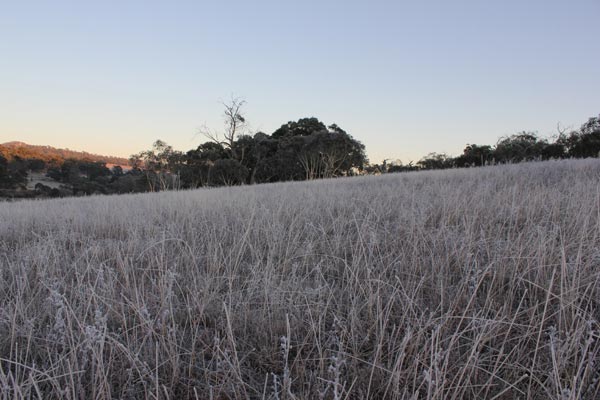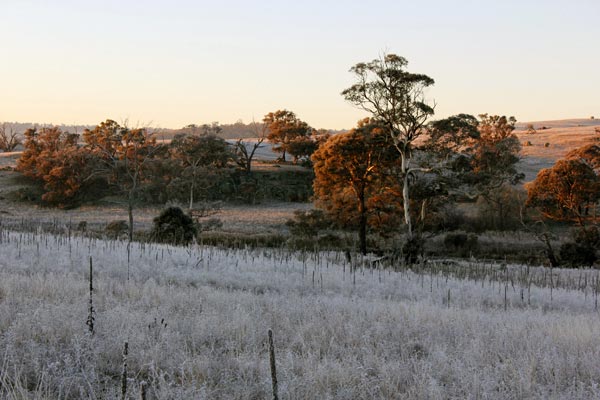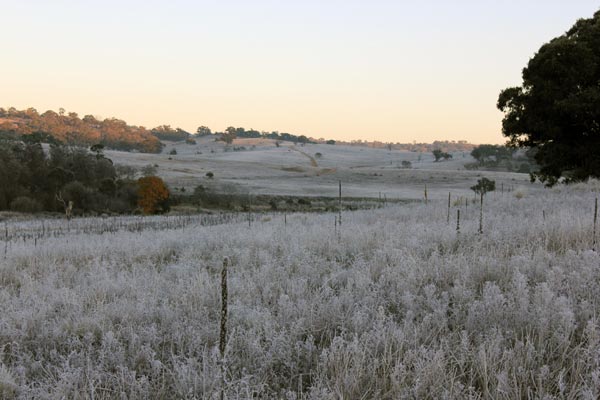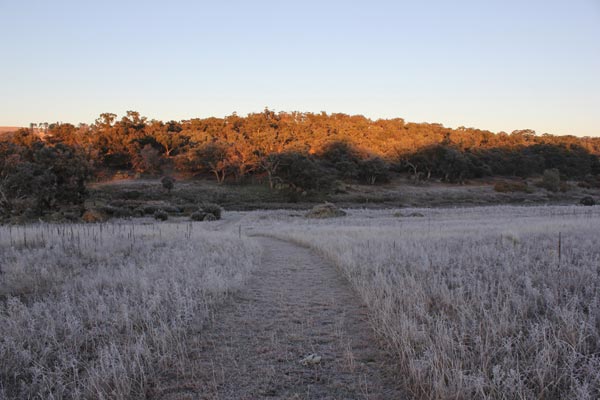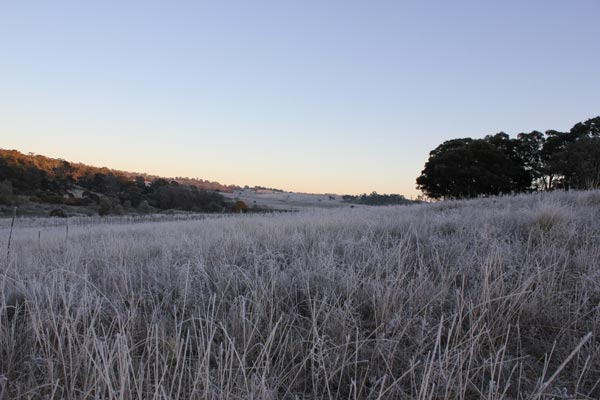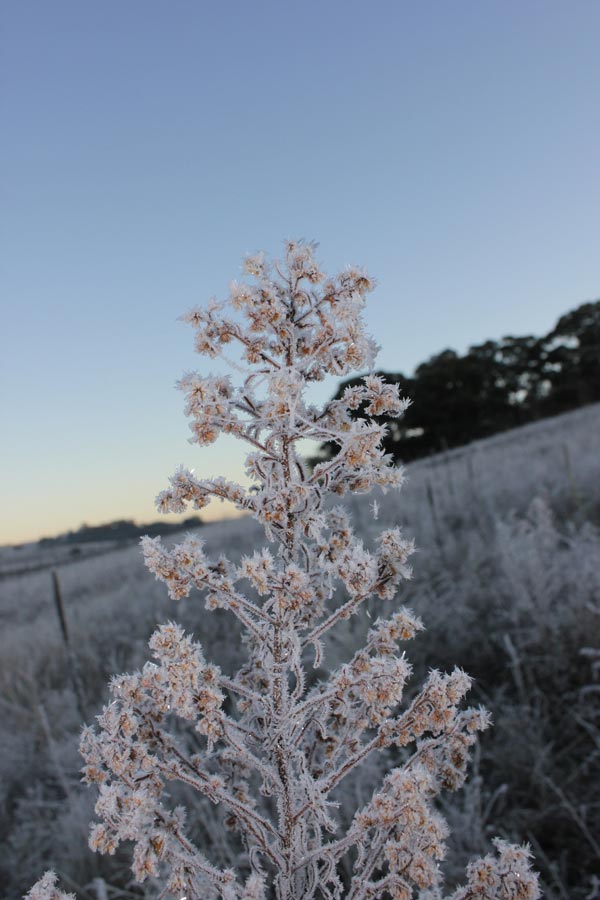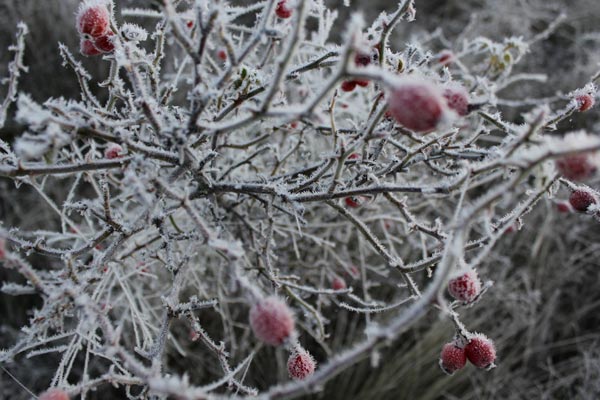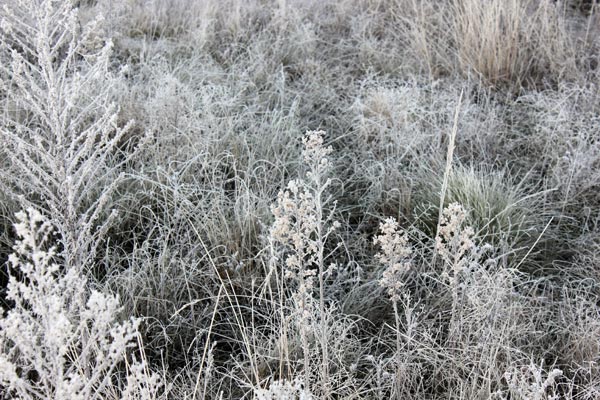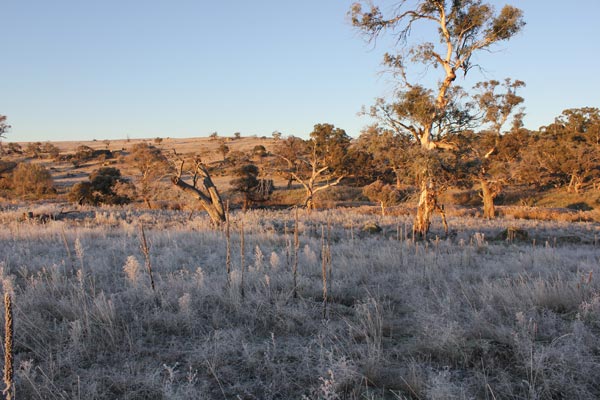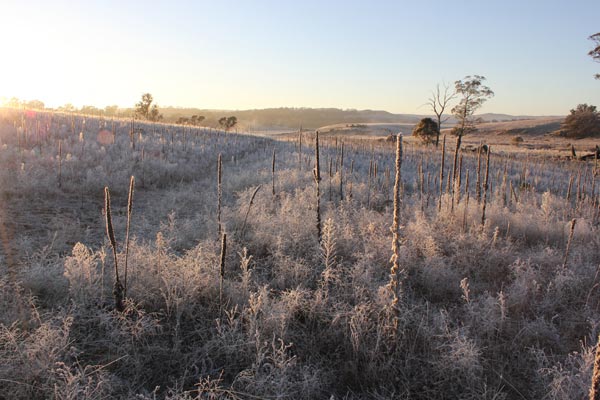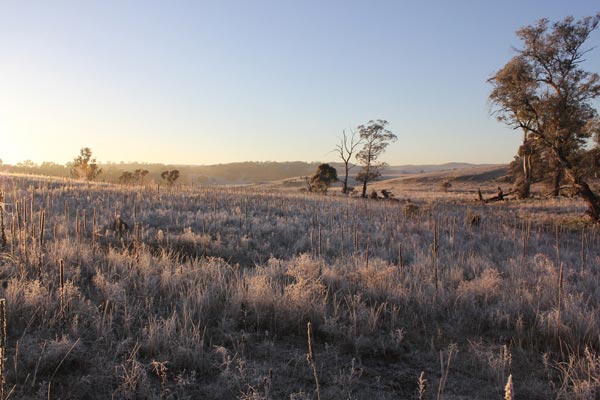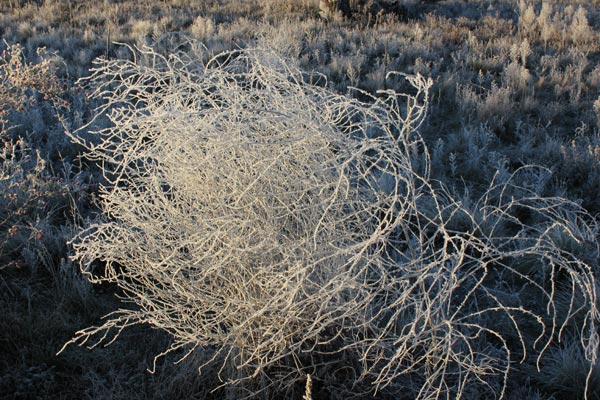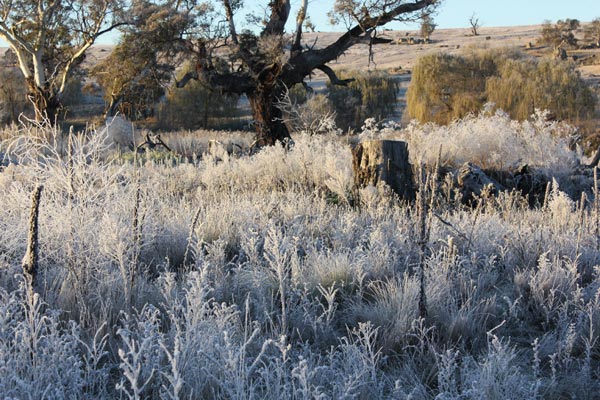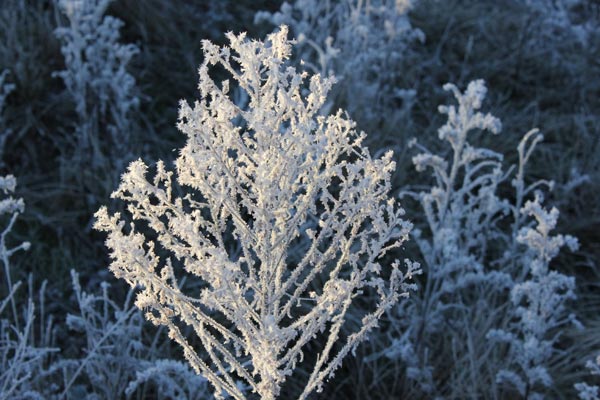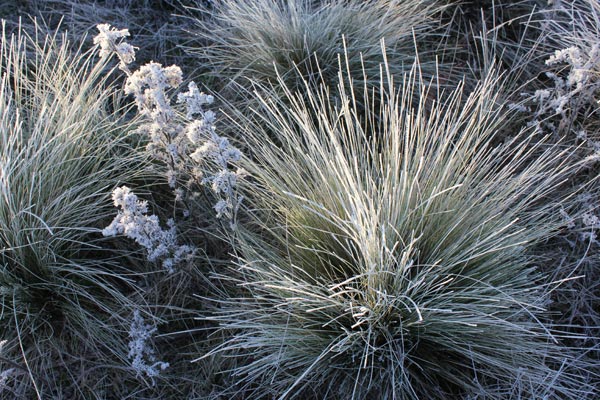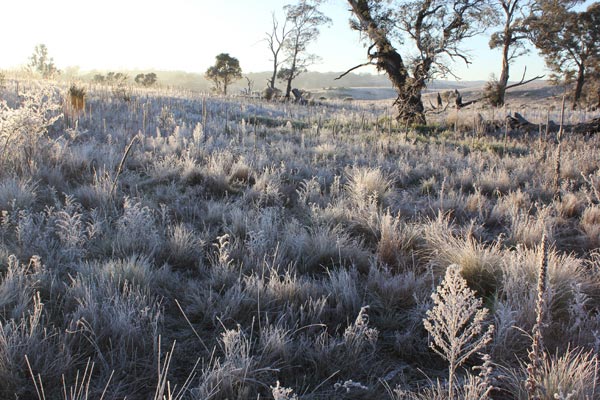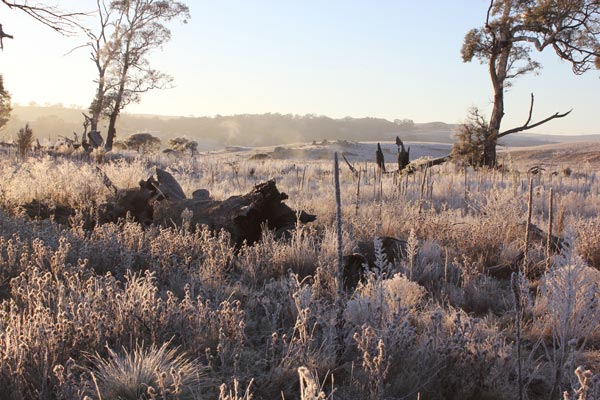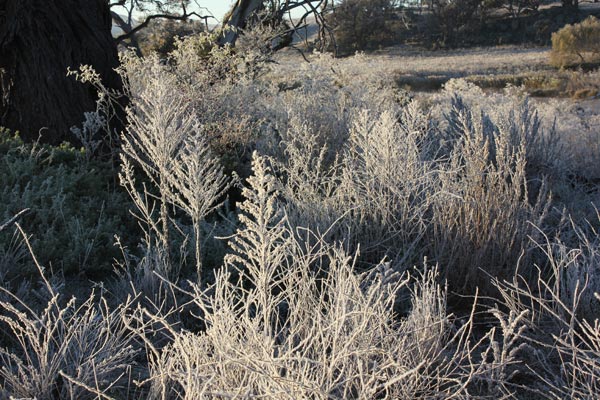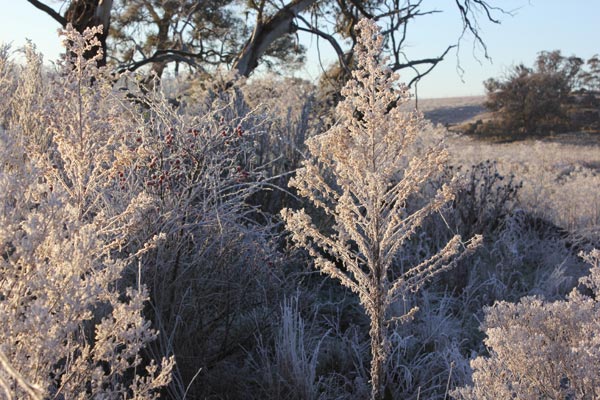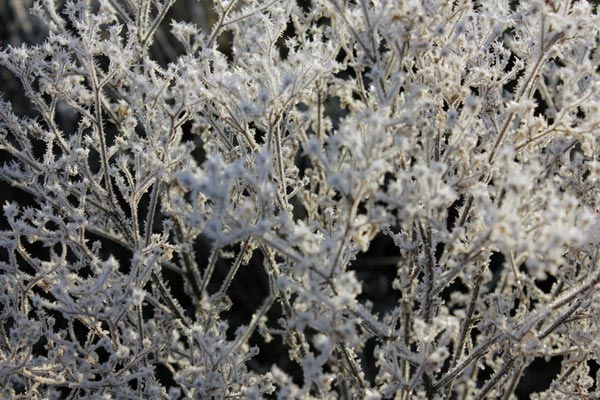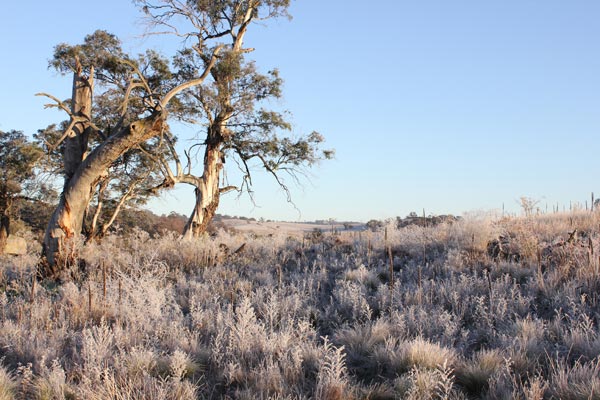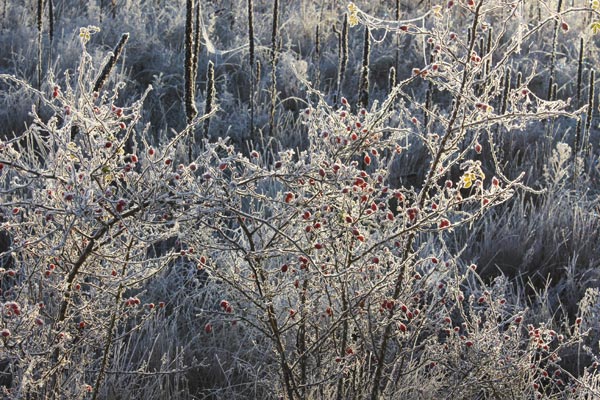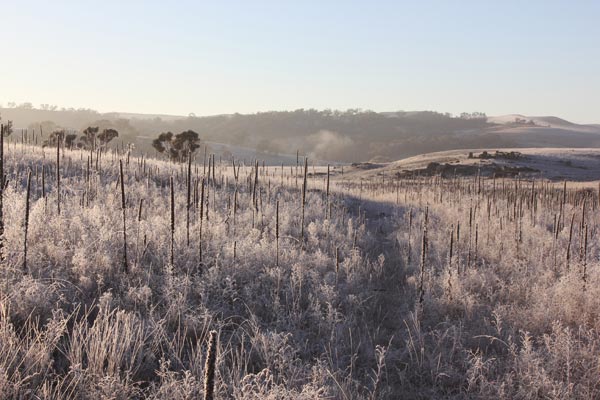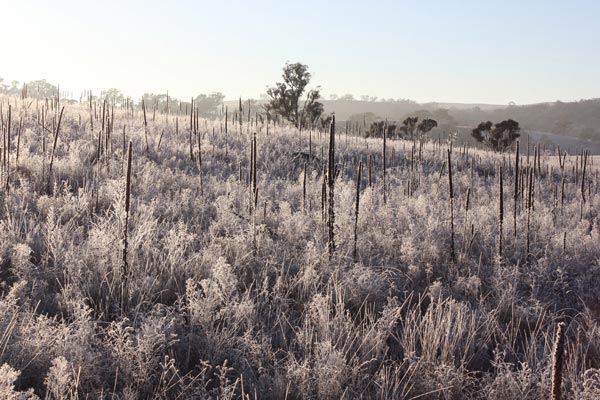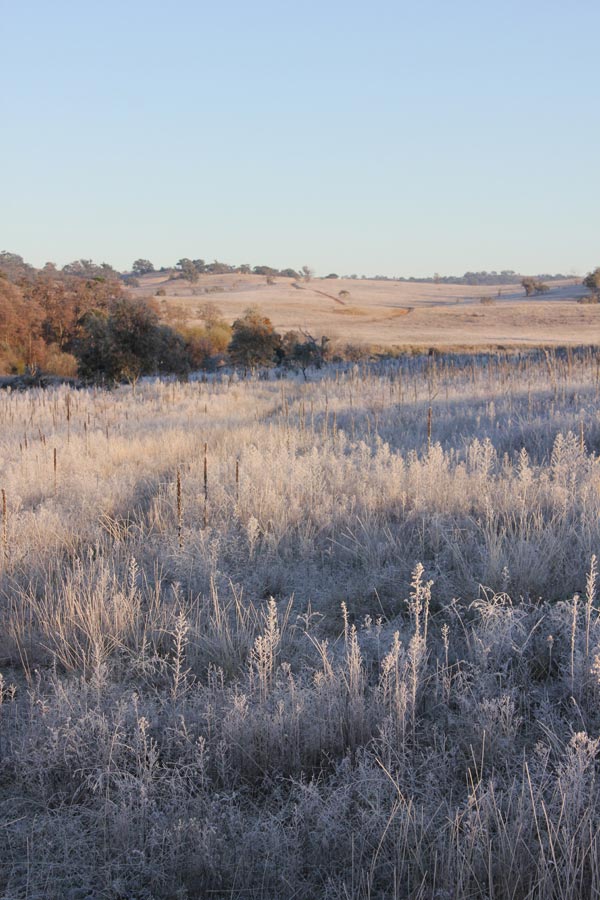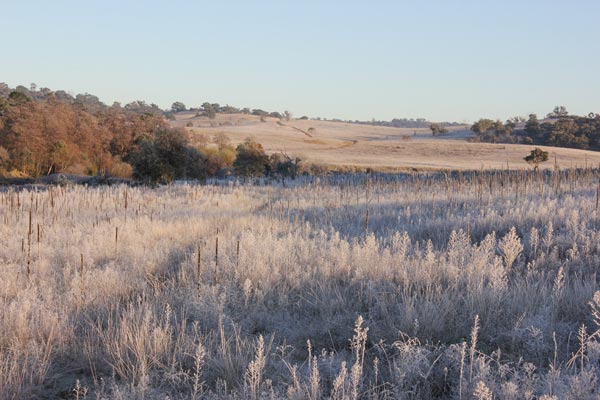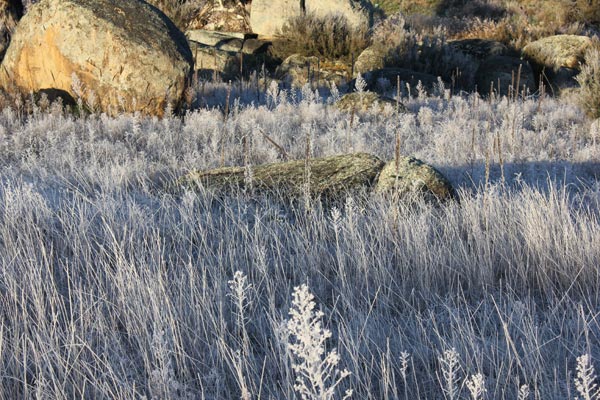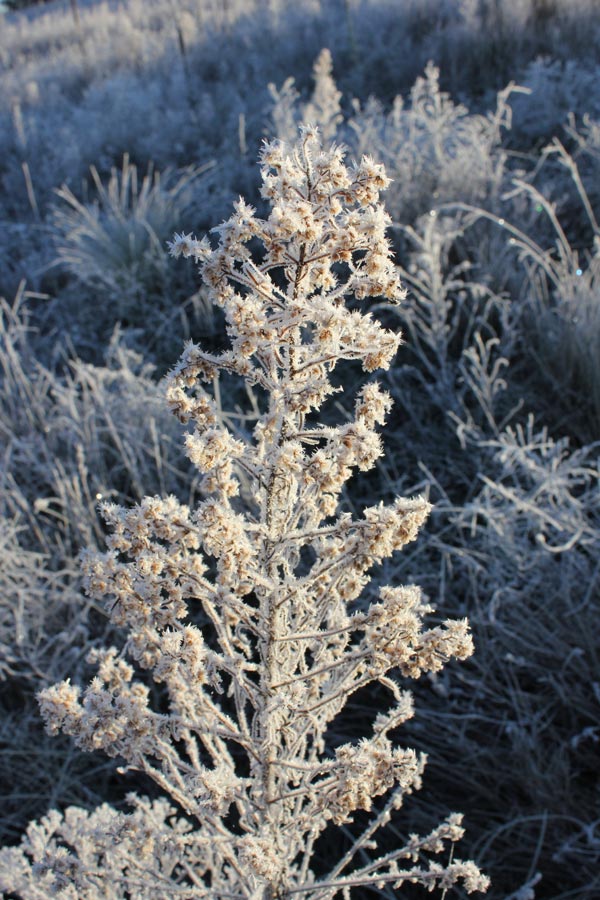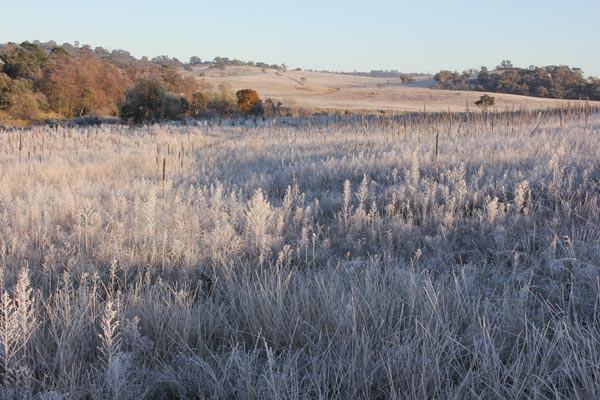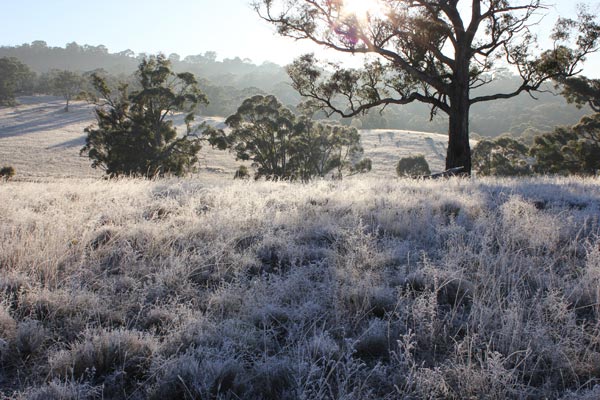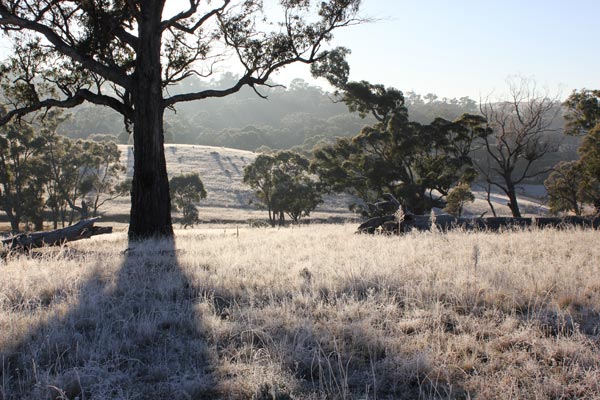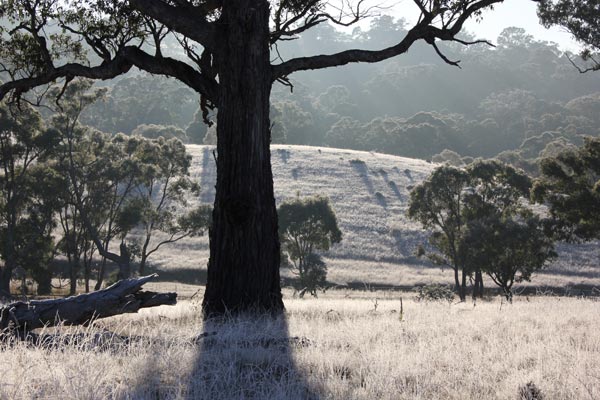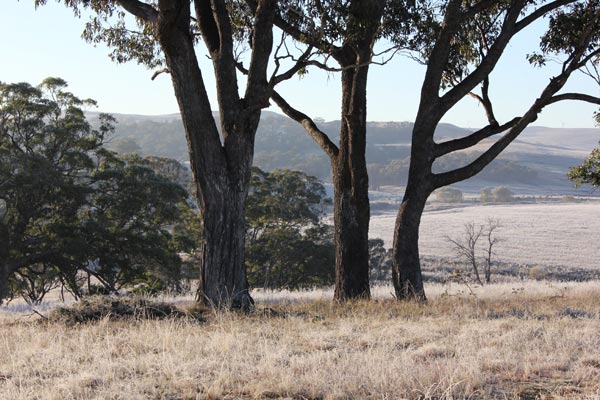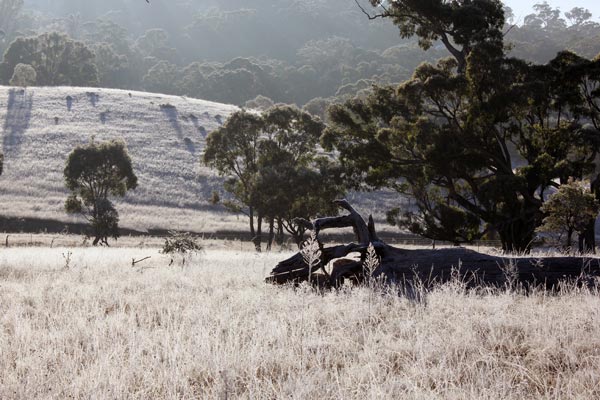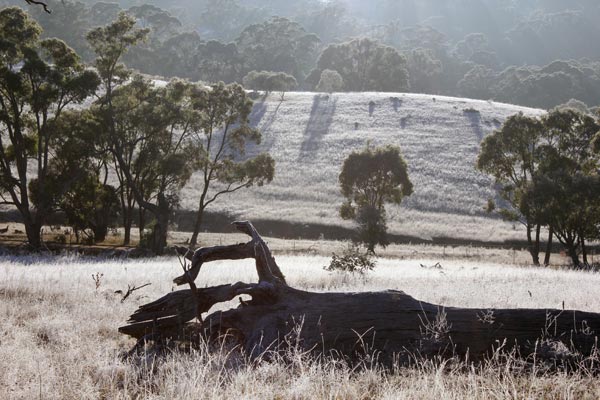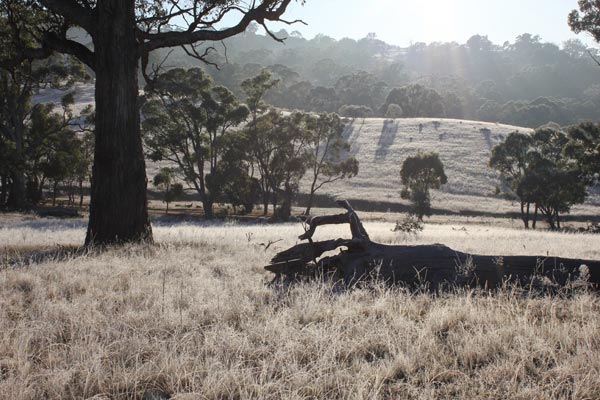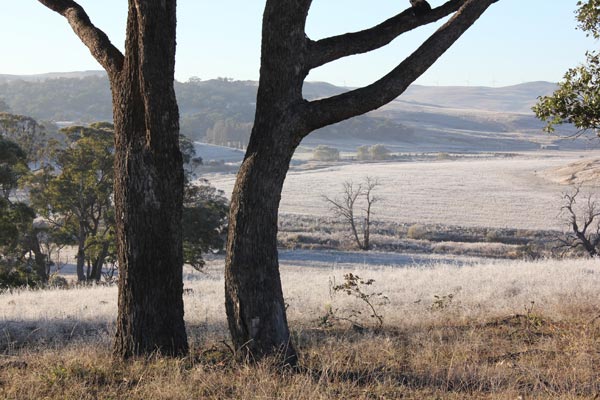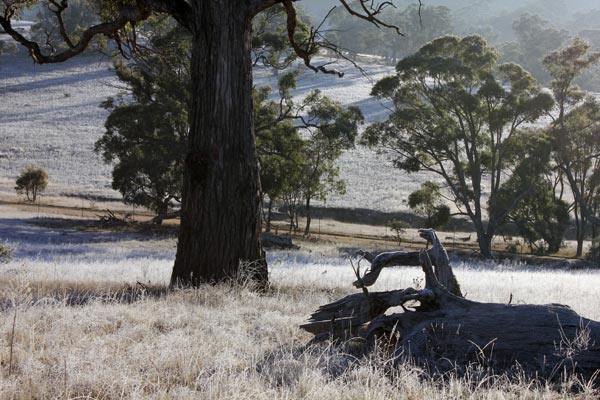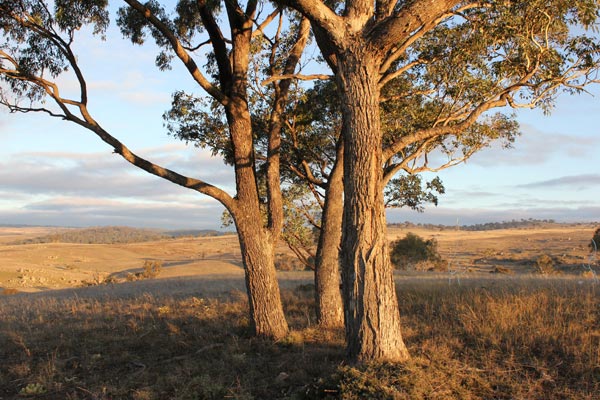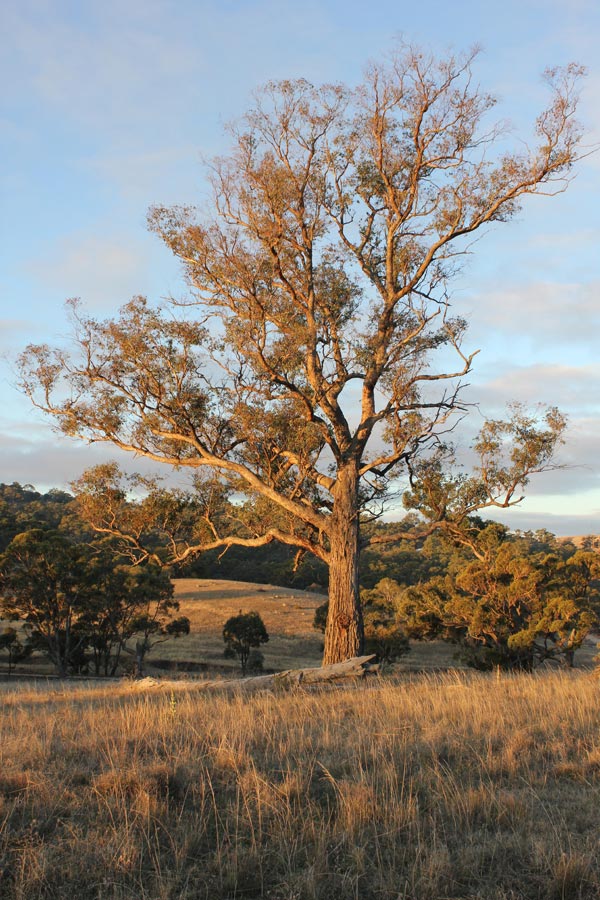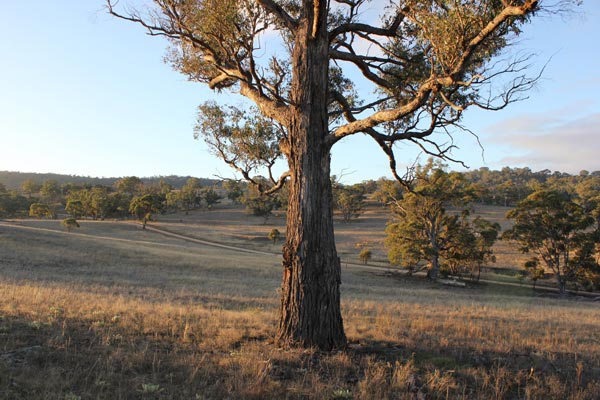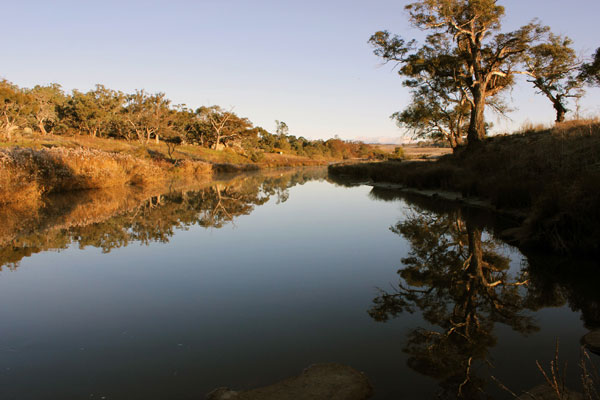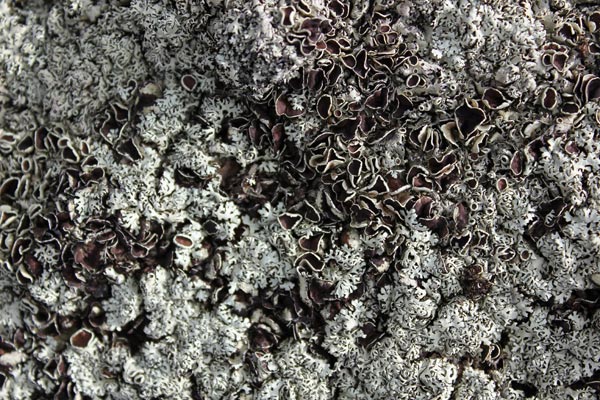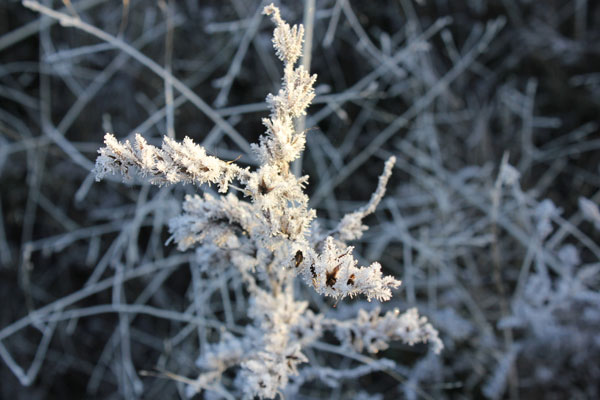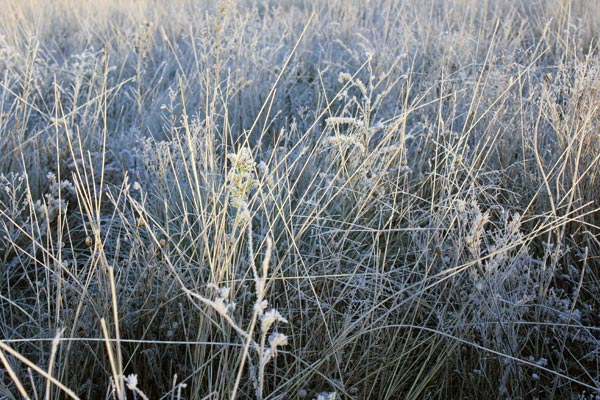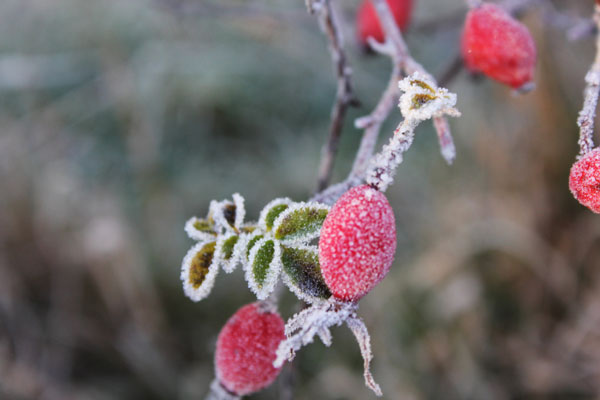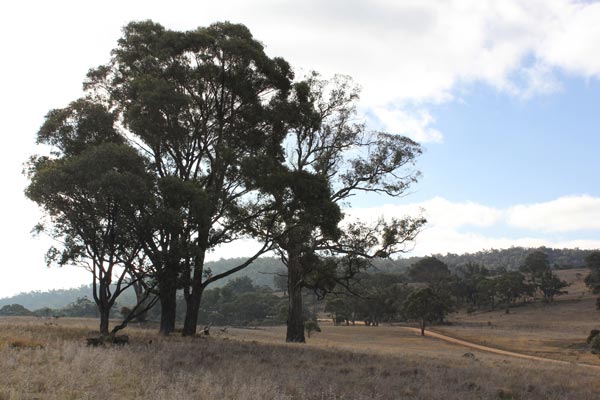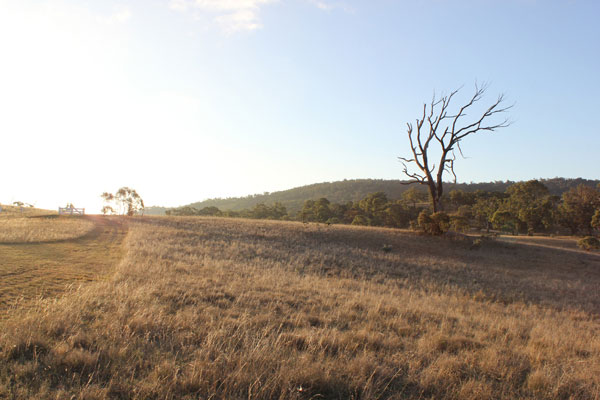Rhythm
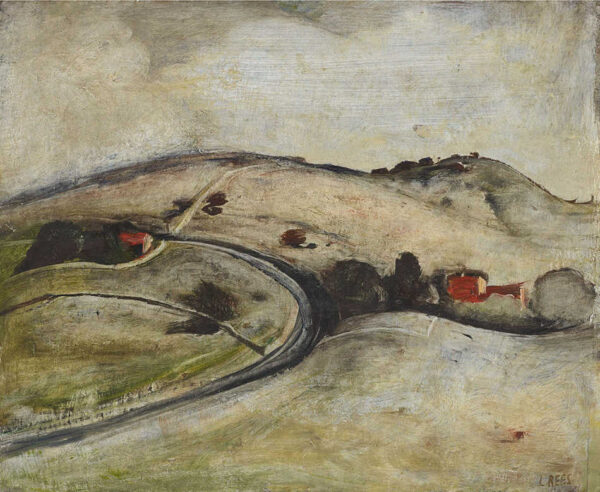
If you walk through any Australian pastoral grassland, taking a route that allows your journey to effortlessly follow the shape of the land, you may also be walking along an ancient path used by other people; an artefact of sorts, of the travels and rhythmical movements of earlier lives.
The artefact may be invisible; still there, however, buried in the ground below your feet as you walk along a ridge or through a gap between two hills or beside the remnant shoreline of an old sea. The ancient path still exists, as traces that may only be detectable as a subtle shift in the colour or compaction of the earth, or as charcoal left from a hundred hearths dotting places along the way — or it could be wholly visible, as a present day road that traces the old journeys.
In 1947 the Art Gallery of New South Wales purchased a small painting by Australian artist Lloyd Rees. Painted in Gerringong on the states south coast The Road to Berry has captured a ‘rhythmical movement’ (Rees’s words) in the scene — the curves of the roads and fencelines, the folds of the hills, the placement of houses as two patches of vermilion in an otherwise sombre grassland — an atmospheric landscape, sensory in its effect on people, that appears to have touched many, including myself.
***
Australia, 1940s. A man sits under a tree in Gerringong, southern New South Wales. He looks at a road winding through some grass covered hills; and, allowing that artists are free to invent whatever they ‘see’: he sees clouds (probably), houses (probably), scatterings of trees (most likely). The small canvas board in front of him is still blank but the landscape is loaded.
We can’t know what he is thinking, or if what he is thinking has anything to do with the rhythmical movement he applies to the canvas that he later says, ‘just happened’. We can know however, with only a little magical thinking that the rhythm and movement is already there — under the hills, running through the grassy slopes, inside the houses, floating through the woven air of the sky — ancient pathways, changing seasons, old climate patterns, species evolving and becoming extinct, billions of births and deaths, houses, ruins, shifting shorelines, moving fencelines. The unwritten history of the landscape’s rhythmical movement is inseparable from the moment’s fleeting view.
Something of the landscape got into a person sitting under a tree in Gerringong. We can often sense this, without needing to understand why — that when we enter a landscape the landscape enters us.
*
Lloyd Rees quote from the Art Gallery of New South Wales web archive:
The Road to Berry is a tiny picture I remember painting from under a copse of trees … and I just remember a small canvas and a sort of rhythmical movement that just happened; I was always amazed at the attraction it had … I was never able to repeat that little picture, and that’s a good thing.
artgallery.nsw.gov.au/collection/works/7940
I never saw a tree
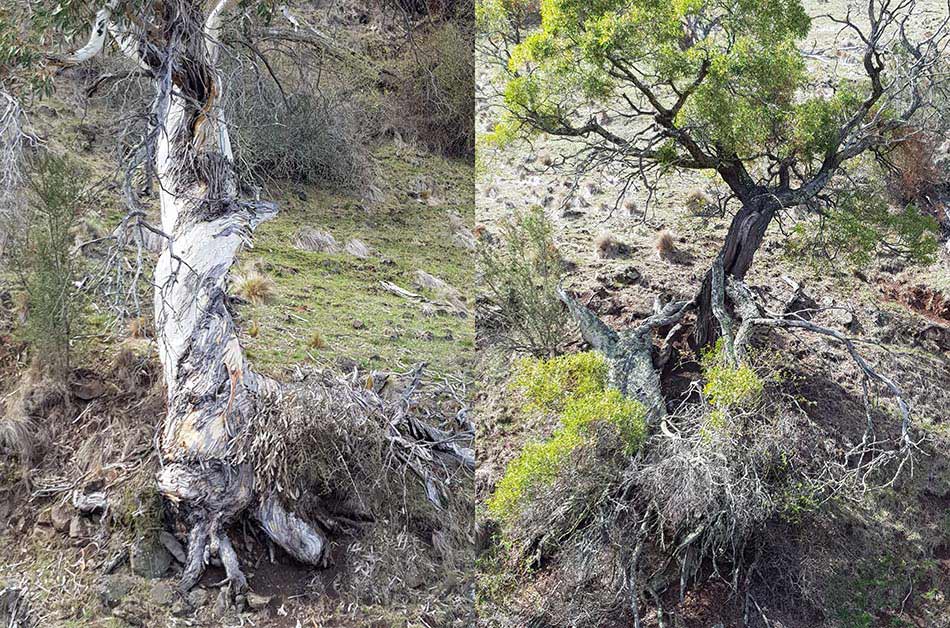
‘I never saw a tree’, says Annie Dillard in Pilgrim at Tinker Creek, ‘that was no tree in particular’. On a tree scale of particularity, eucalypts, in the way they visually chronicle the hard knocks of living in a harsh landscape — all gnarled trunks, shredded bark and broken branches — must be somewhere near the top of that list.
What appeared on screen, however, were not the intended tree photos but pictures of landscape as texture: a less compositional view of landscape, and for someone who thinks about the visual arrangement of objects often, a fresh view with somehow fewer encumbrances.
Suddenly it becomes a place (tree included) of infinite forms and presences and particularities, and it reads as a woven thing, or to skip anything that sounds like creationism, a thing as if woven.
Notes:
Pilgrim at Tinker Creek
Annie Dillard’s 1974 Pulitzer Prize winning narrative
about living alongside a creek in Virginia, USA
Harper Collins
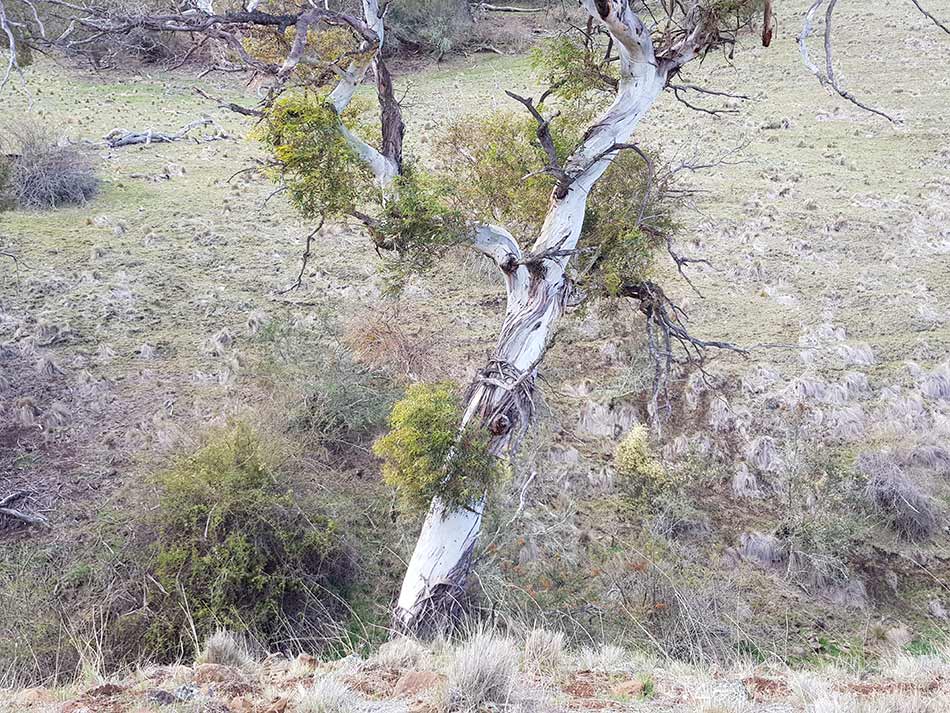
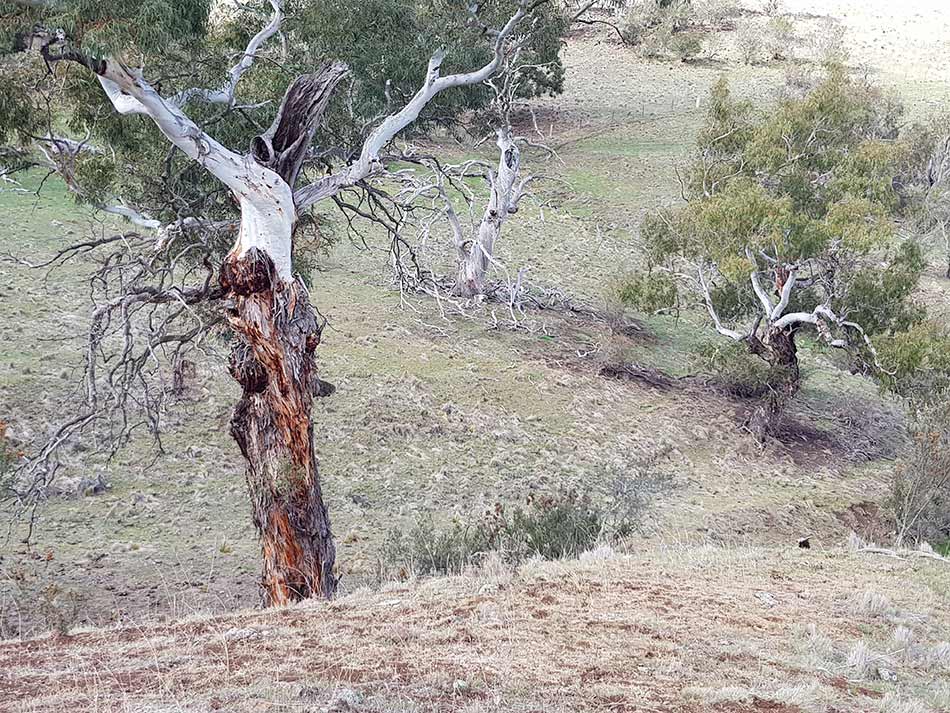 x
x
Another country
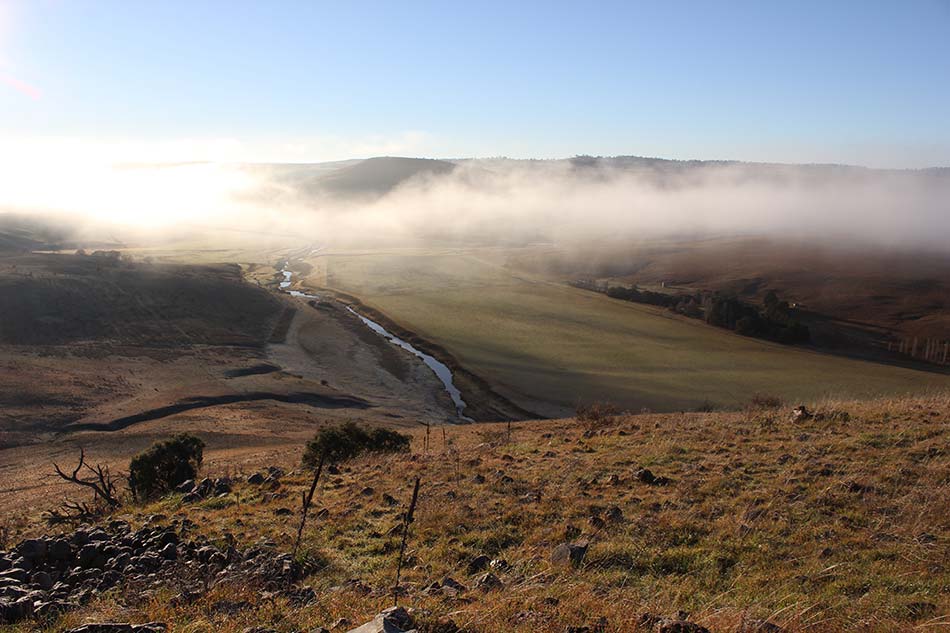 Bombala. Bobundara. Billilingra. Cootralantra. Gunningra. Jincumbilly. Murrumbucca. Murranumbla. Merriangaah. Myalla. Nimmitabel. Wullwye. Yarrandoo. The place where I live, like the whole continent, is overlayed with place-names in the languages of black Australia, or corruptions of those names, but most times I hardly hear them.
Bombala. Bobundara. Billilingra. Cootralantra. Gunningra. Jincumbilly. Murrumbucca. Murranumbla. Merriangaah. Myalla. Nimmitabel. Wullwye. Yarrandoo. The place where I live, like the whole continent, is overlayed with place-names in the languages of black Australia, or corruptions of those names, but most times I hardly hear them.
One day I’m driving through this place and a program I like called Word Up comes on the radio. Someone is reciting a string of Indigenous language words, and at the same time I’m looking out through the car window at grass and sky, treeless conical hills and rocks, and the whole landscape suddenly looks utterly foreign. Like another country. The strange thing is that this feels right. As if it were waiting to be made inexplicable.
Notes
ABC Radio: Word Up shares the diverse languages of black Australia from Anmatyerre to Arrernte, from Bidjara to Bundjalung, from Nyungar to Ngaanyatjarra, from Yankunytjatjara to Yorta Yorta—one word at a time.
(I think the language from my part of the world is called Ngarigu.)
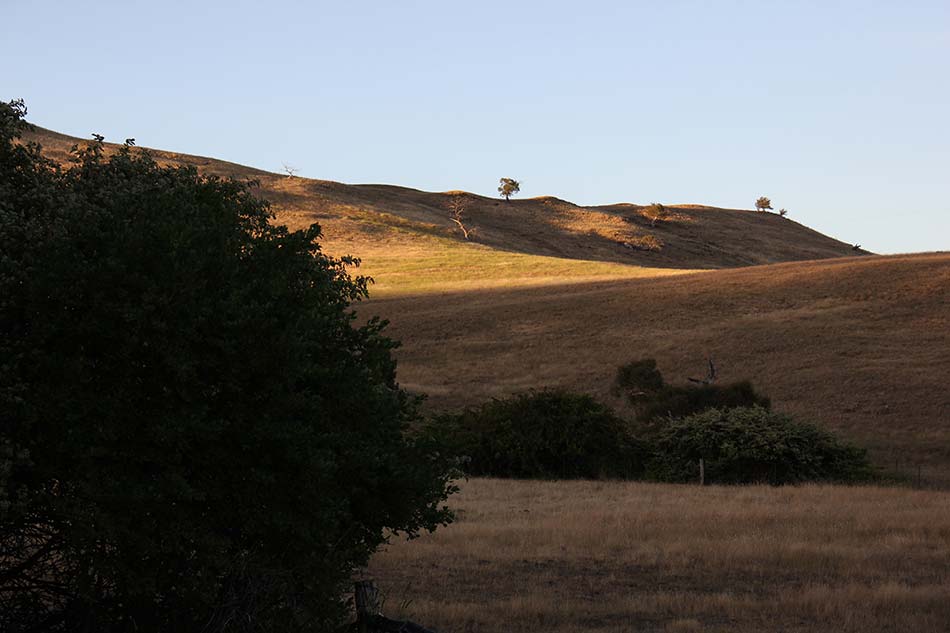
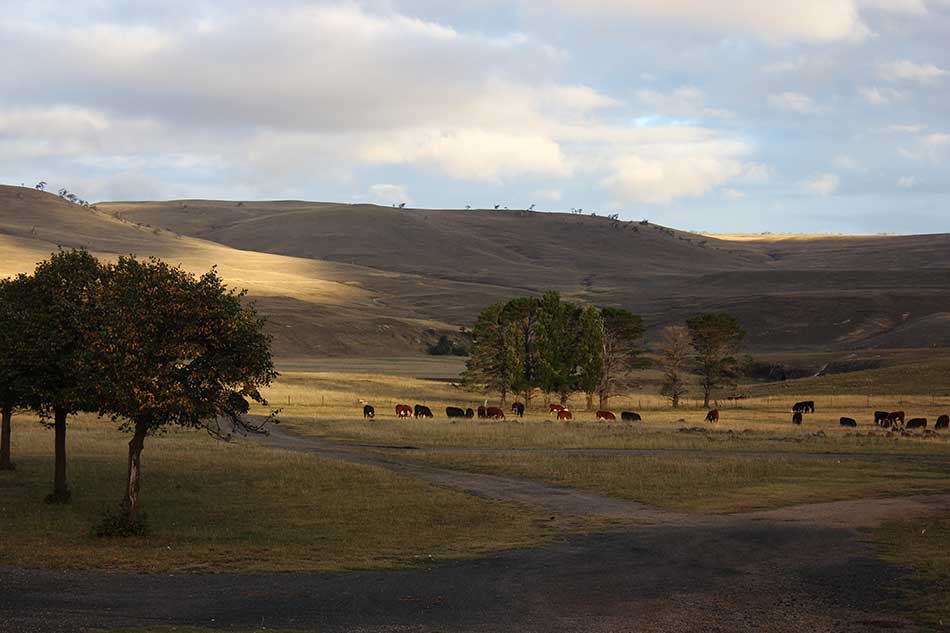
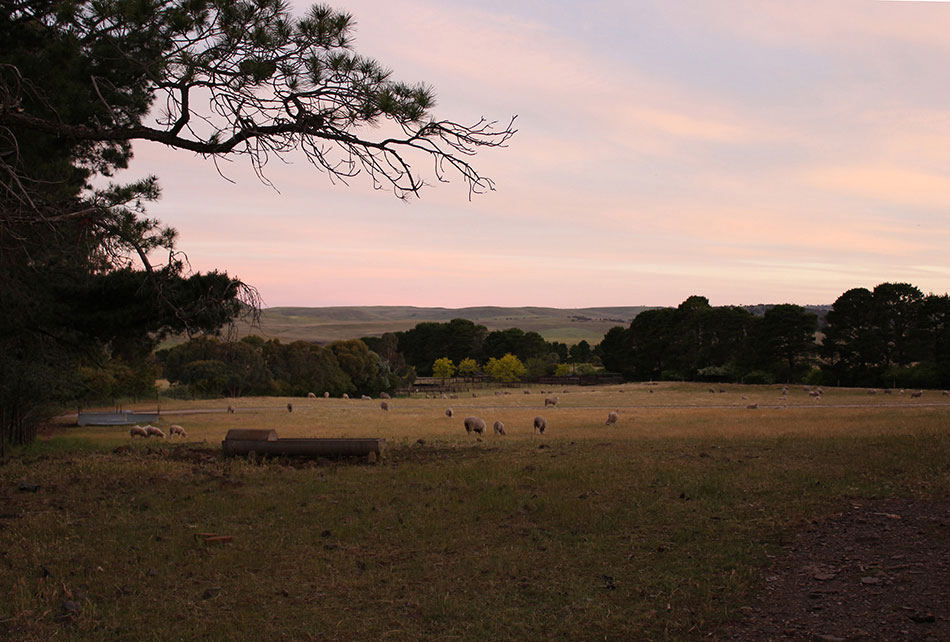
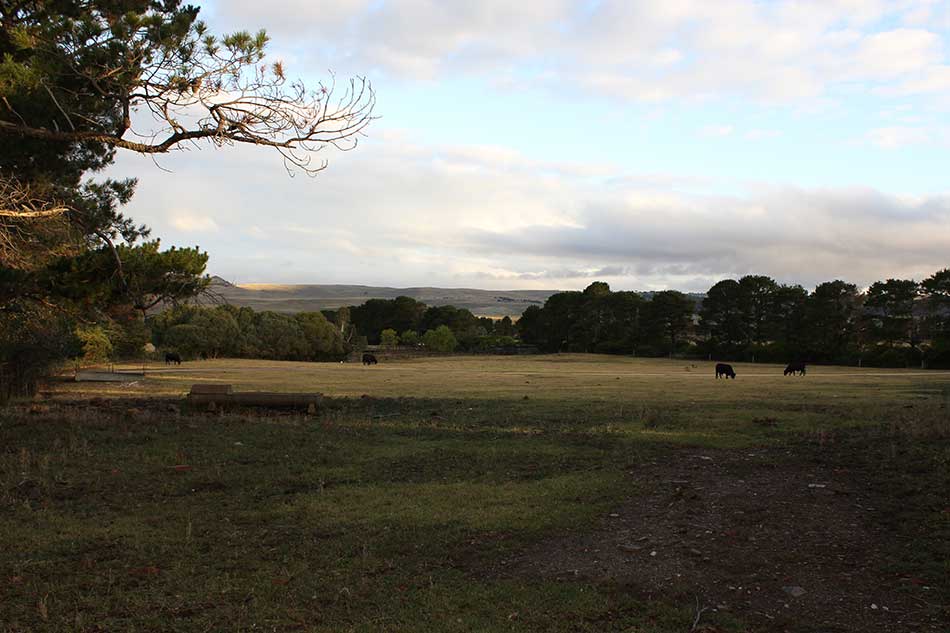
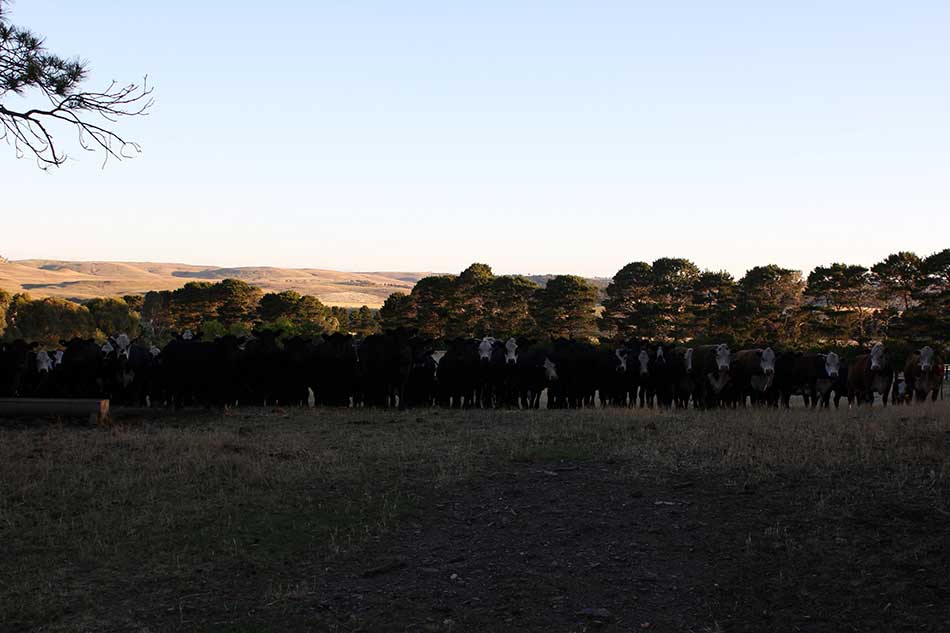
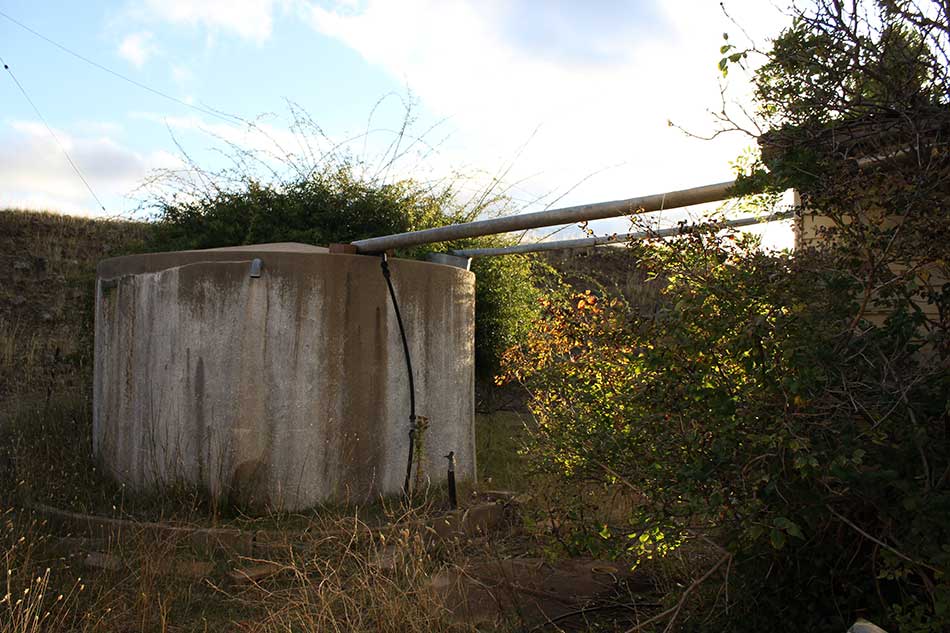
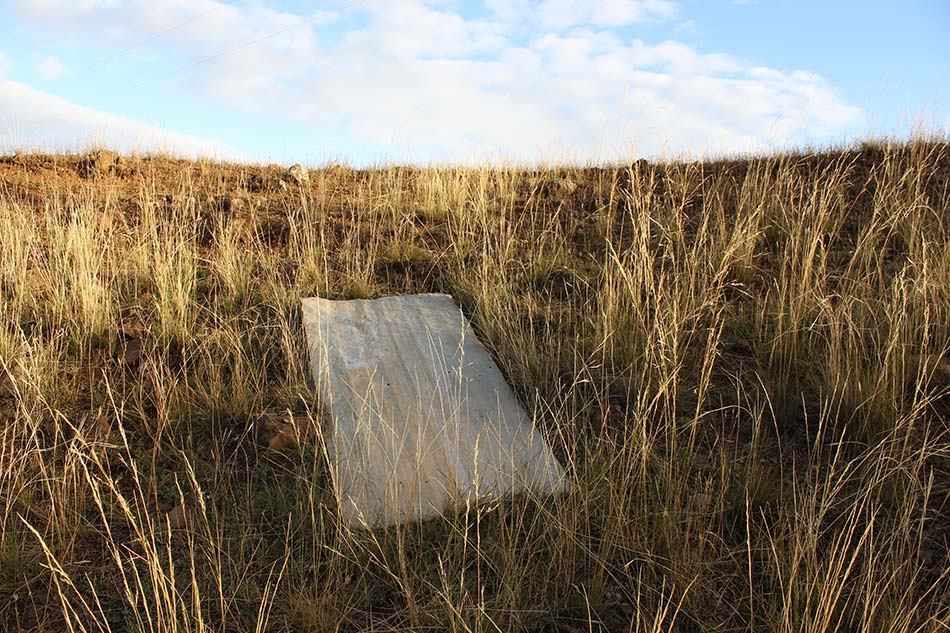
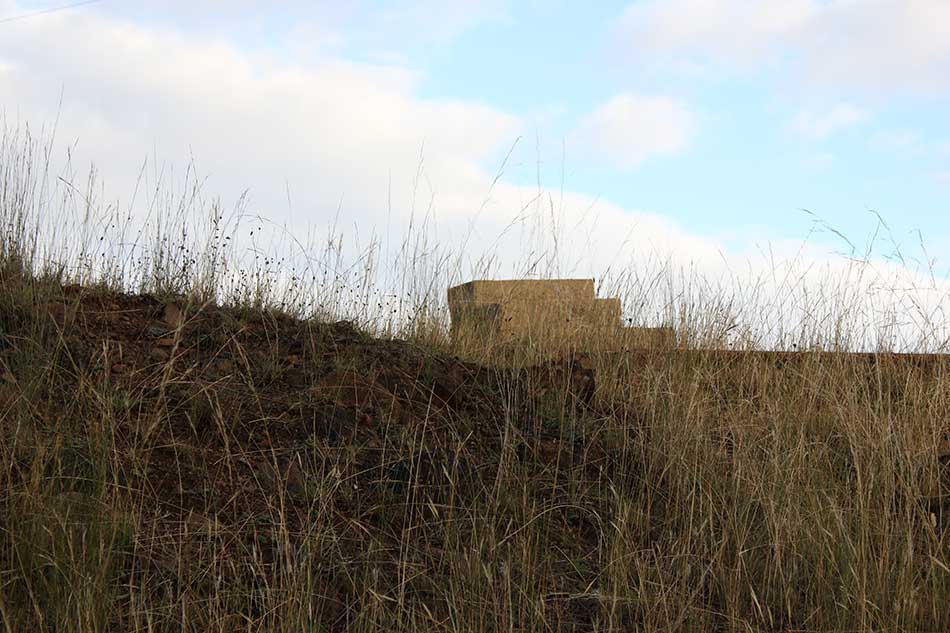
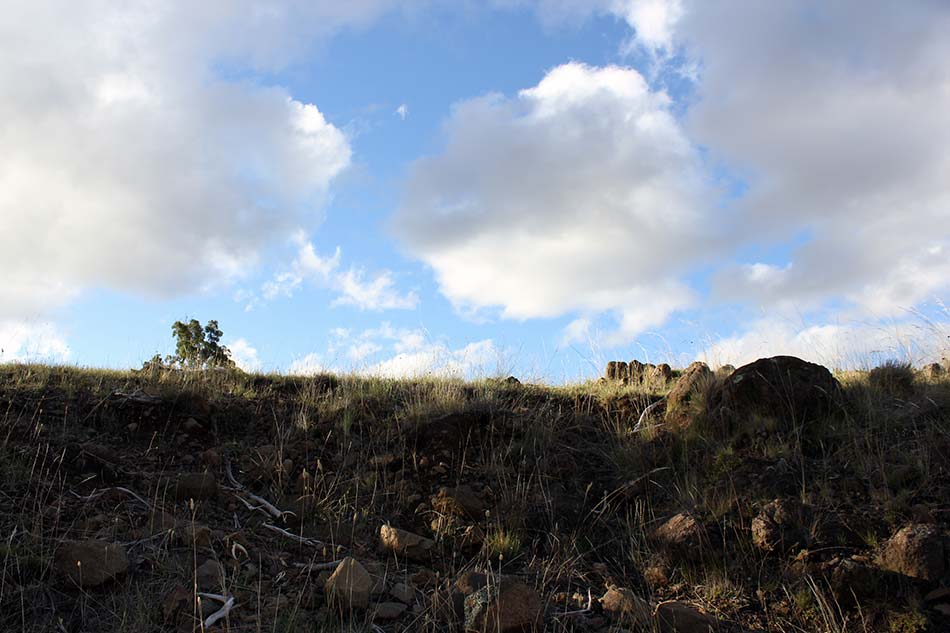
Down to the wire
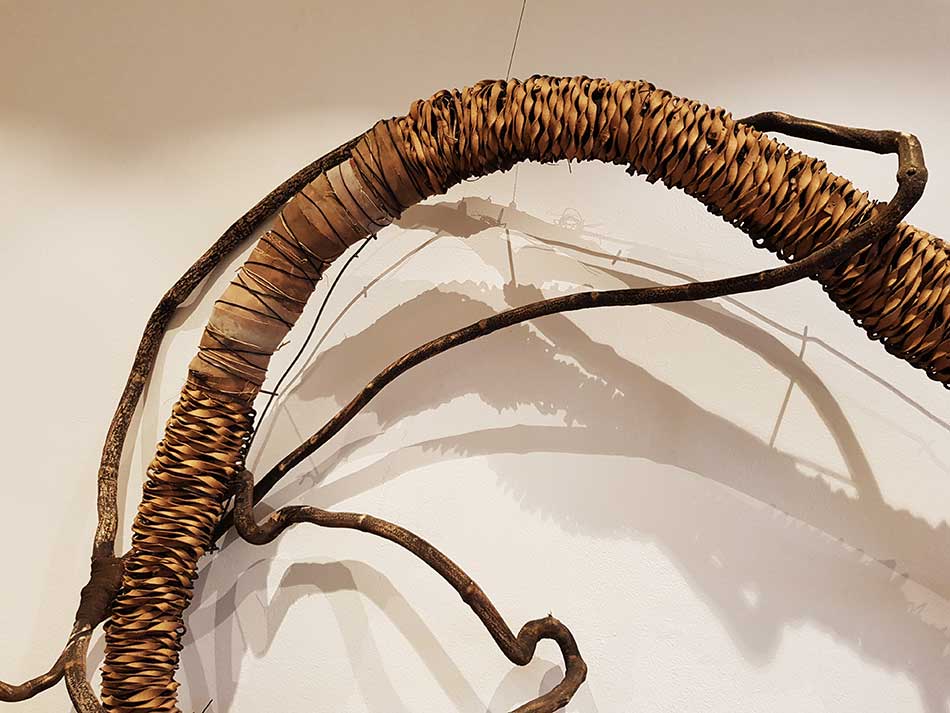 Looking at these beautiful objects makes me want to immediately build a 15 metre long wall to hold a few of them.
Looking at these beautiful objects makes me want to immediately build a 15 metre long wall to hold a few of them.
Down to the wire —
new work by Alison Coates
Shapiro, Sydney
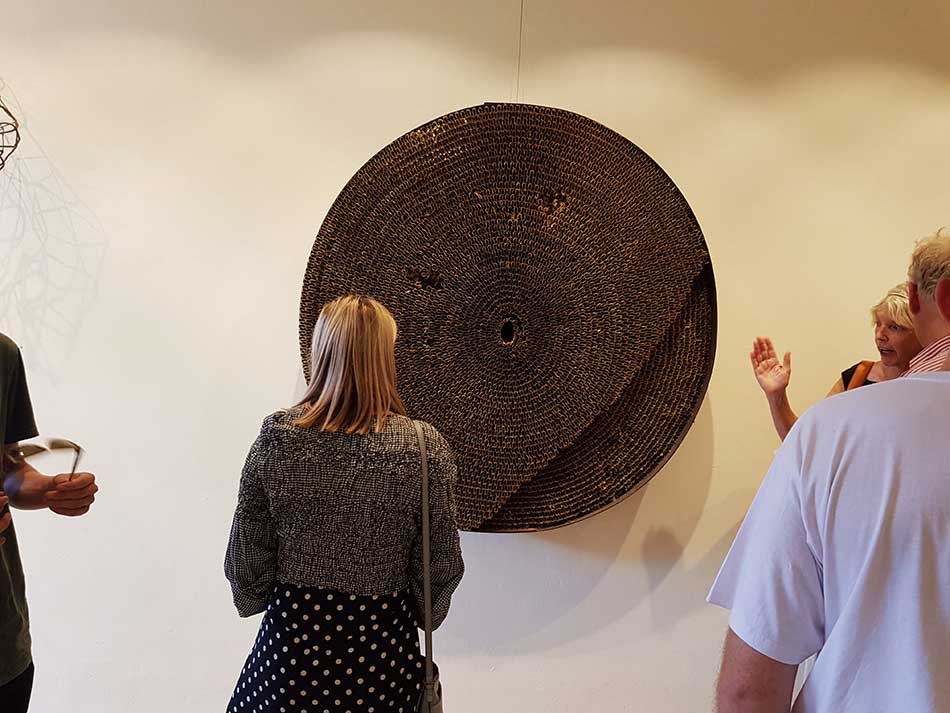
Shades of Tanizaki
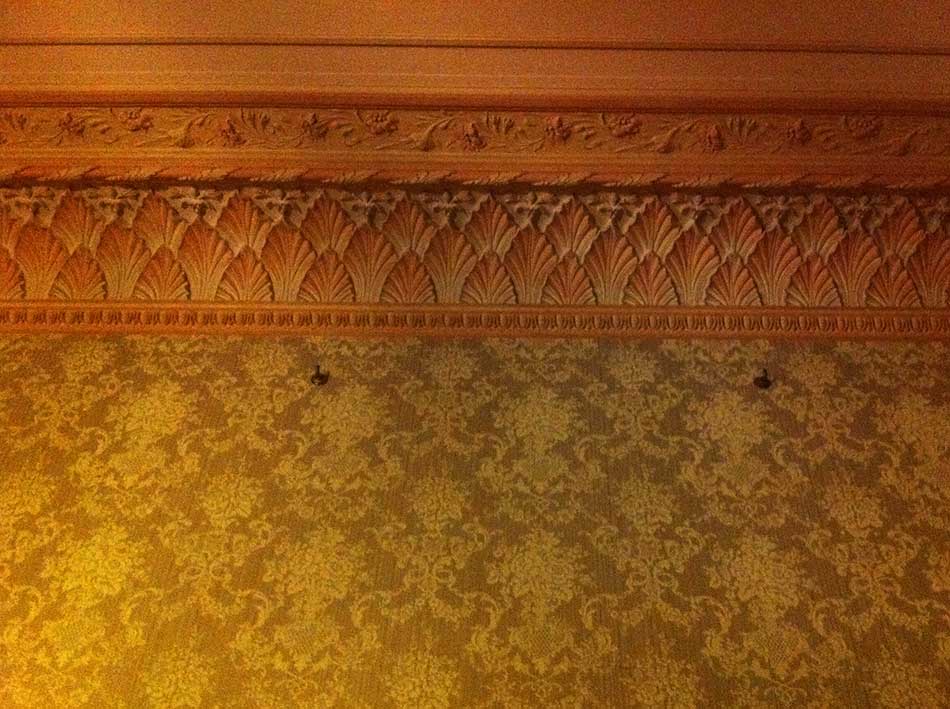 In the rooms of this grand house in the Clare Valley — deeply shaded and closed against the hot, dry summer of a South Australian Christmas — I was reminded of Junichiro Tanizaki’s book on traditional Japanese architecture and aesthetics: In Praise of Shadows; how lacquerware glowed so beautifully in those twilight interiors. Somehow, what we can’t see but know, suspect, intuit or guess is there, has a profound power over the senses.
In the rooms of this grand house in the Clare Valley — deeply shaded and closed against the hot, dry summer of a South Australian Christmas — I was reminded of Junichiro Tanizaki’s book on traditional Japanese architecture and aesthetics: In Praise of Shadows; how lacquerware glowed so beautifully in those twilight interiors. Somehow, what we can’t see but know, suspect, intuit or guess is there, has a profound power over the senses.

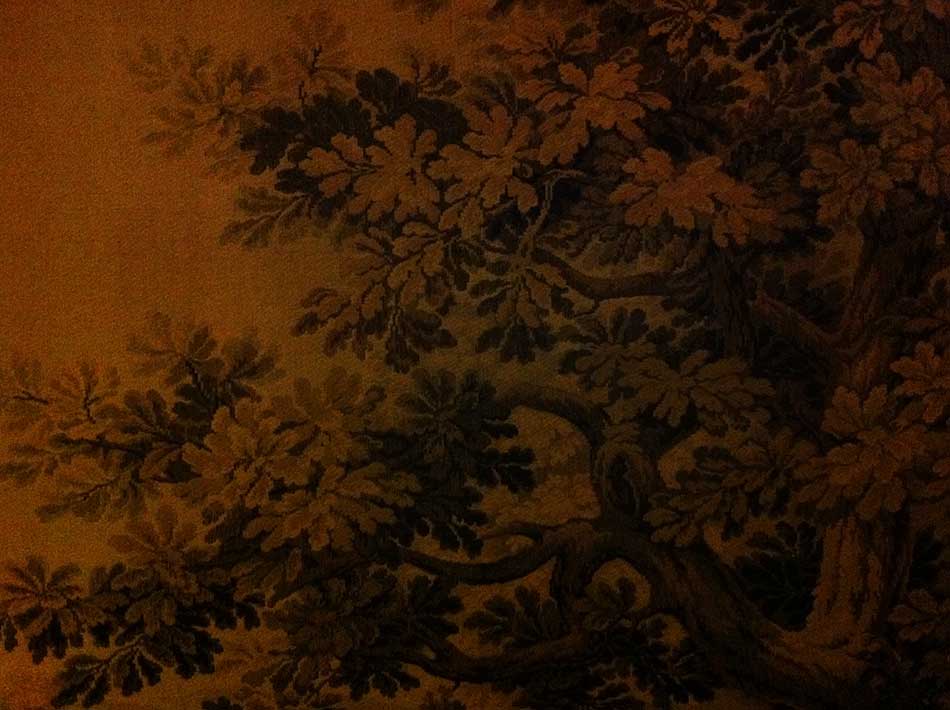
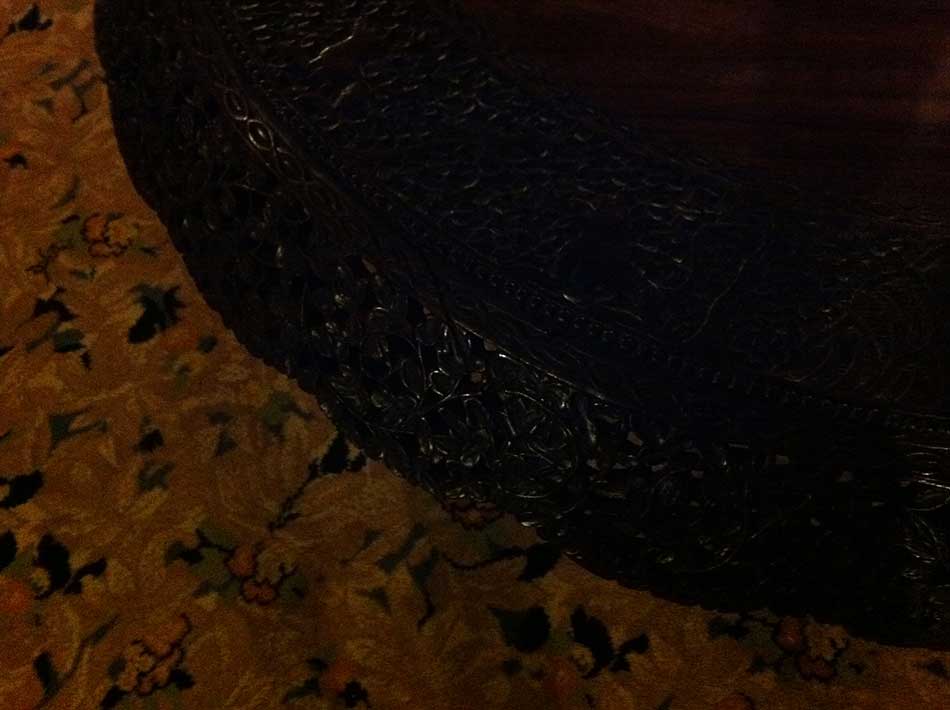
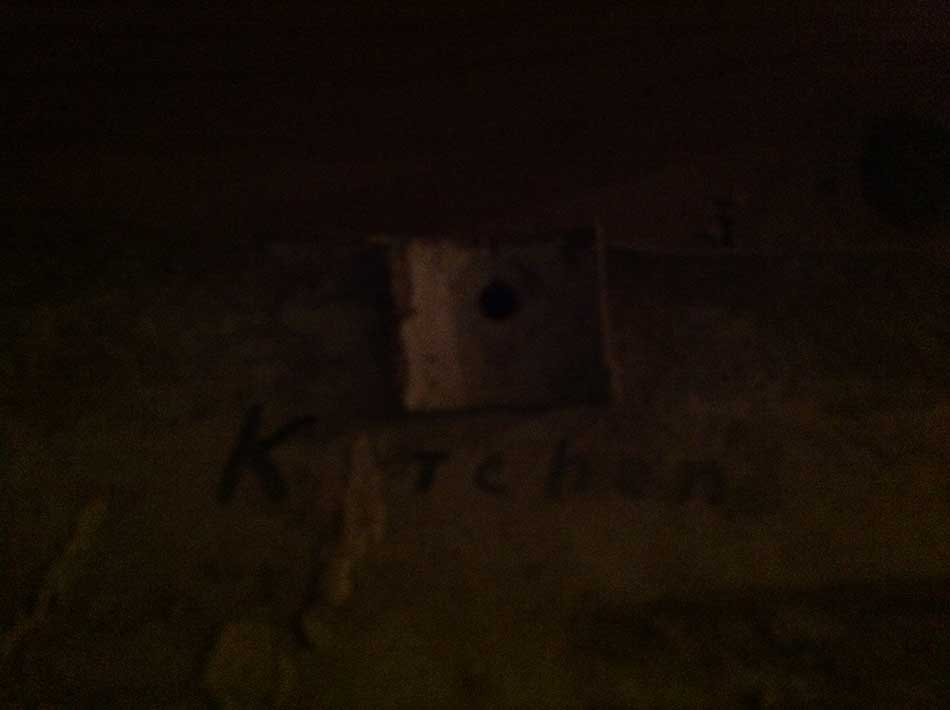

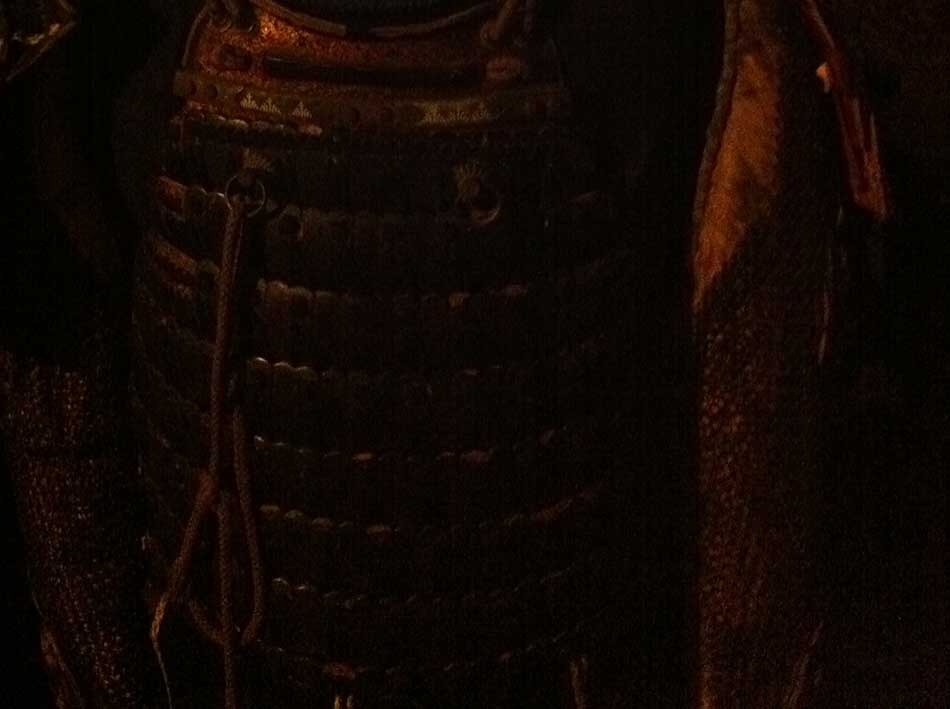
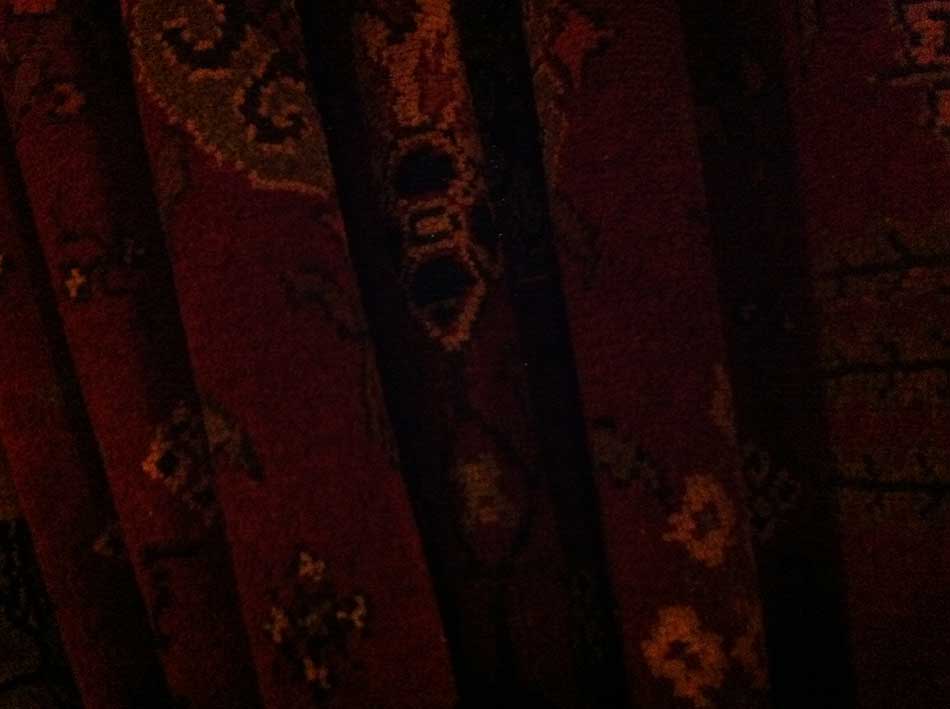
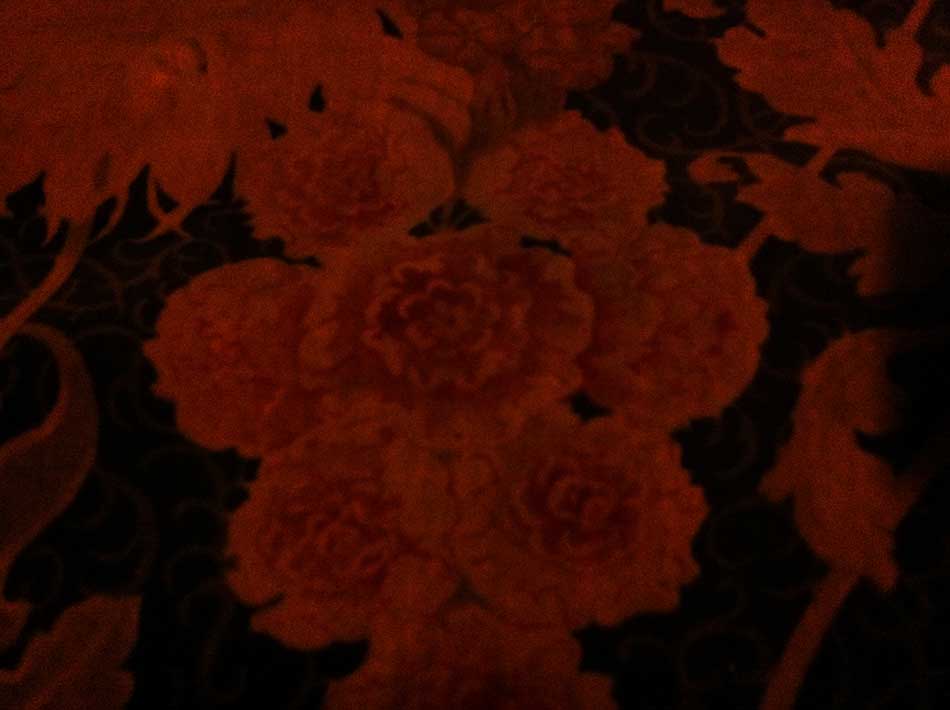
x
Stillness
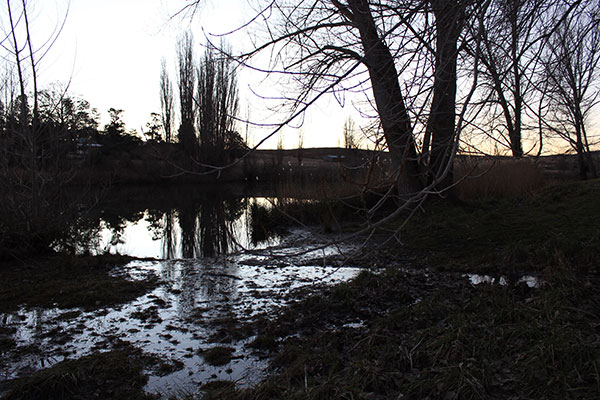
While light space is eliminated by the materiality of objects, darkness is ‘filled’, it touches the individual directly, envelopes him, penetrates him, and even passes through him: hence ‘the ego is permeable for darkness while it is not so for light’; the feeling of mystery that one experiences at night would not come from anything else.
Jacky Bowring, A Field Guide to Melancholy
The river in winter is a poetic transmitter. Particularly at nightfall — as a liminal place of melancholic beauty and stillness as much as a time of transition. Bowring talks about sites of spirited sadness that have the ability to slow things down, defamiliarise, allow for percolation, and facilitate ‘solitude and solice for imagination.’
Photography, GS, Snowy River at Dalgety, New South Wales

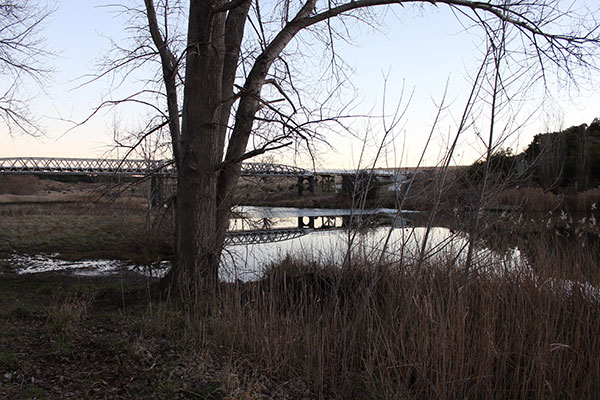
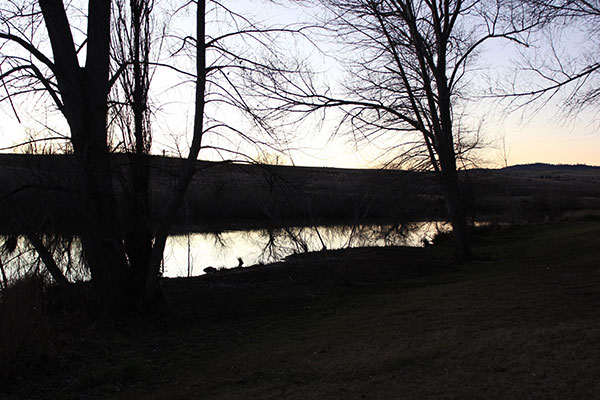
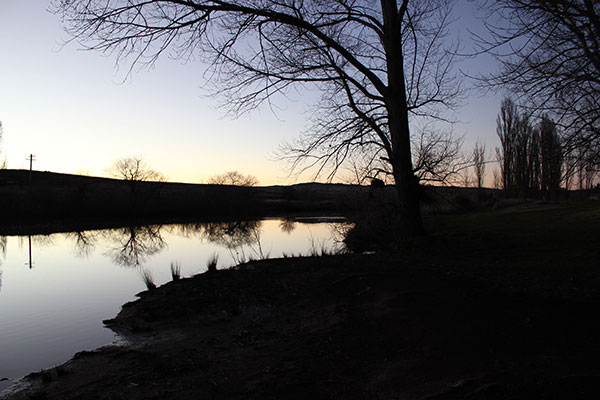
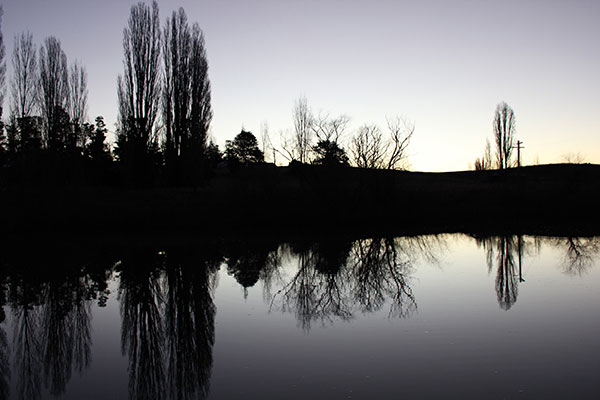
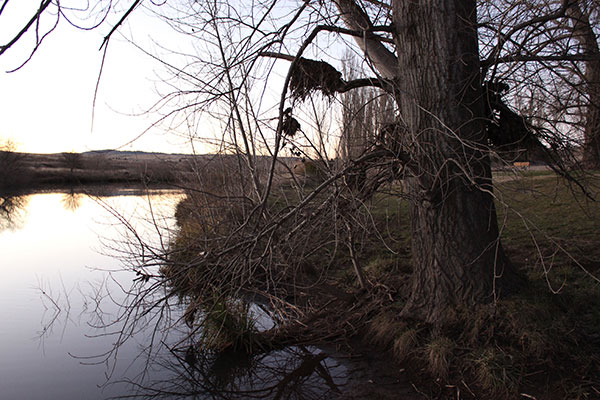
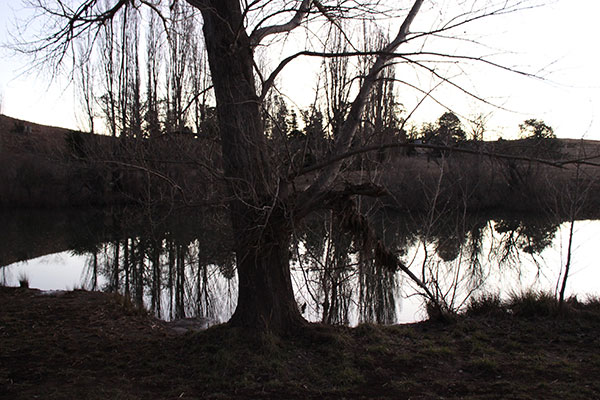
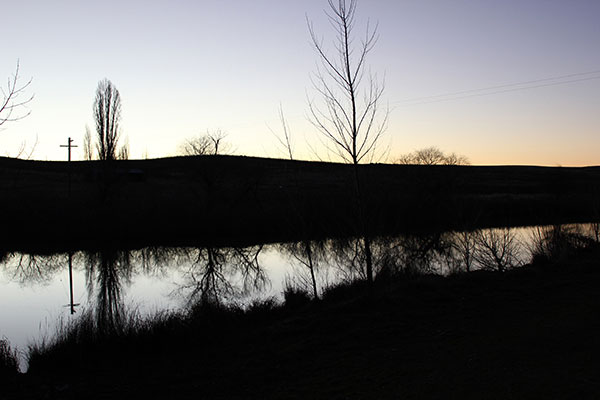
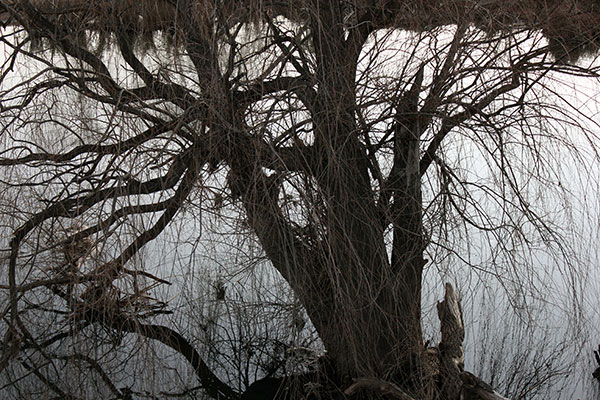
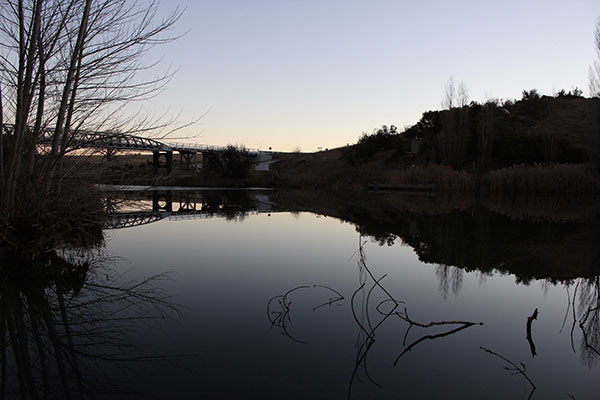
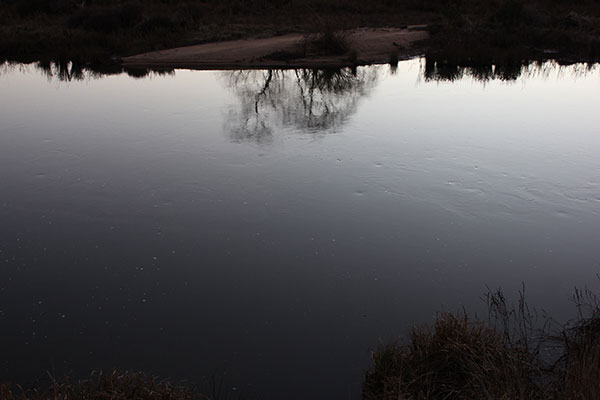 x
x
Subterranean garden
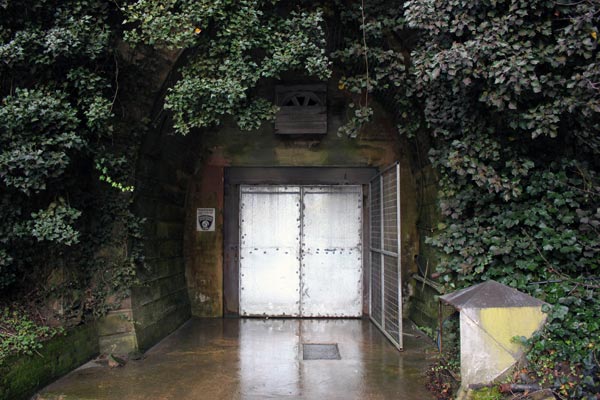
Under a hill in Mittagong (the rim of an ancient volcano) there is a 600 metre long mushroom farm; a dark, subterranean garden in an old, single line railway tunnel, full of strange shapes and beautiful textures. It reminded me of Susan Sontag’s brilliant essay on grottoes: A Place for Fantasy.
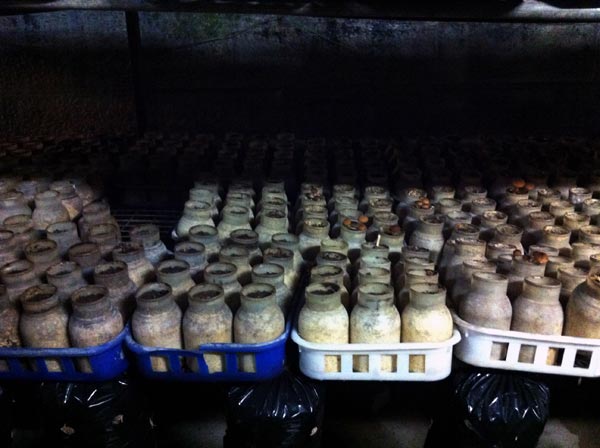
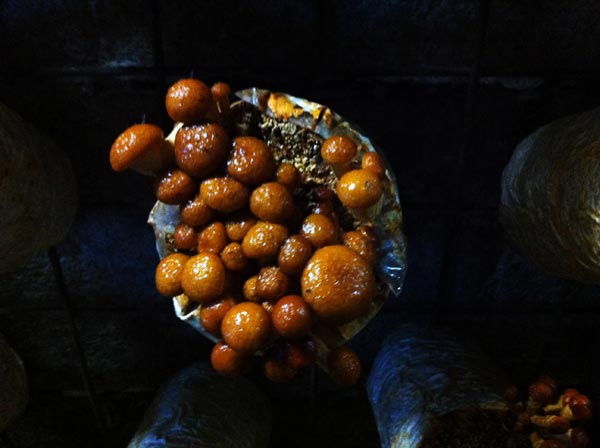
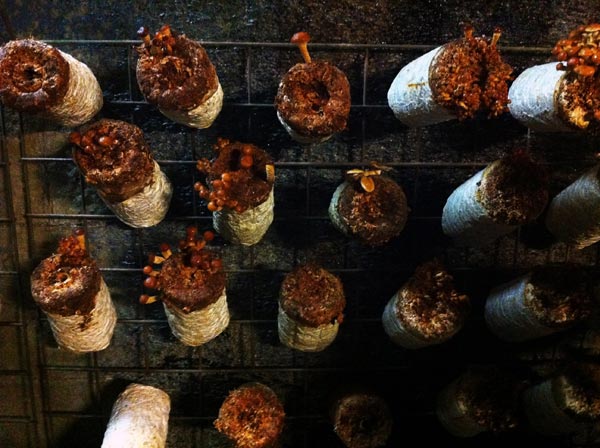
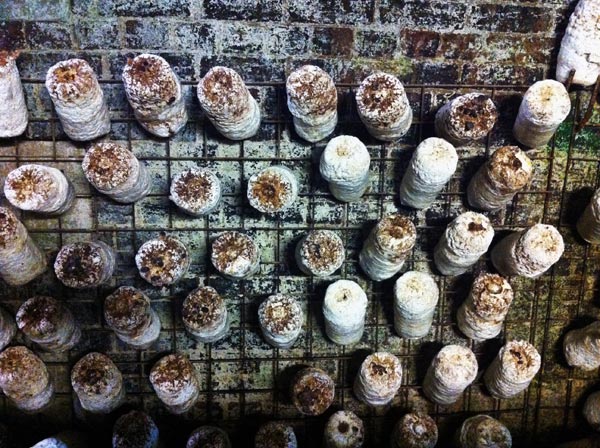
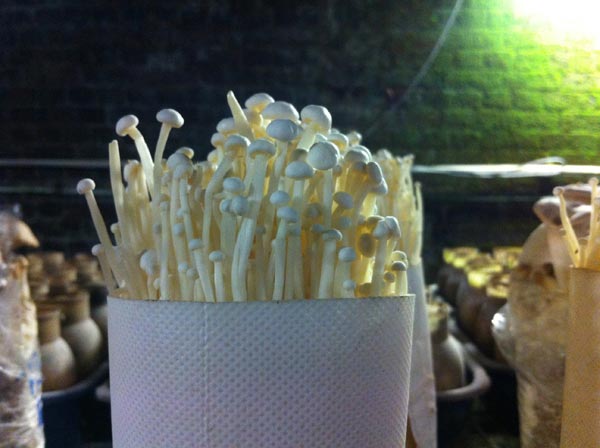
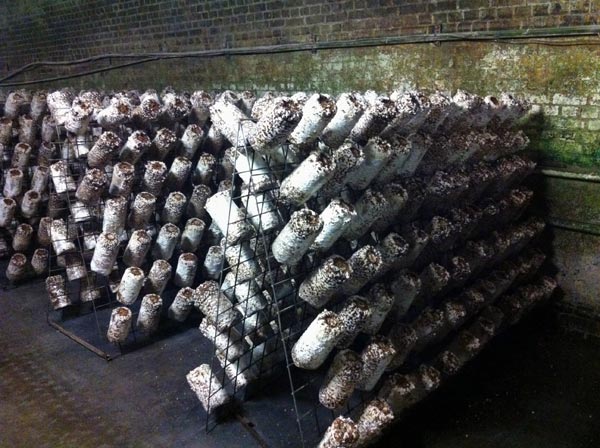
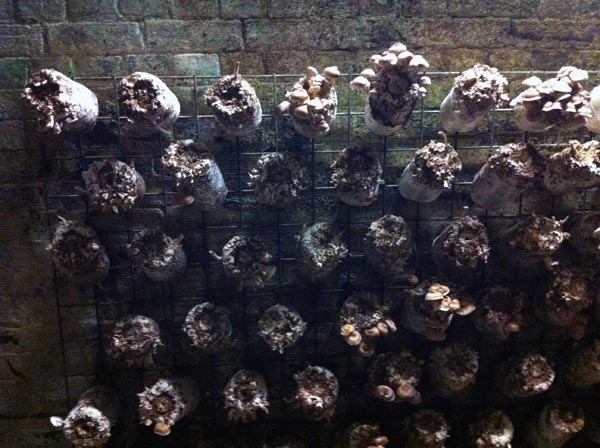

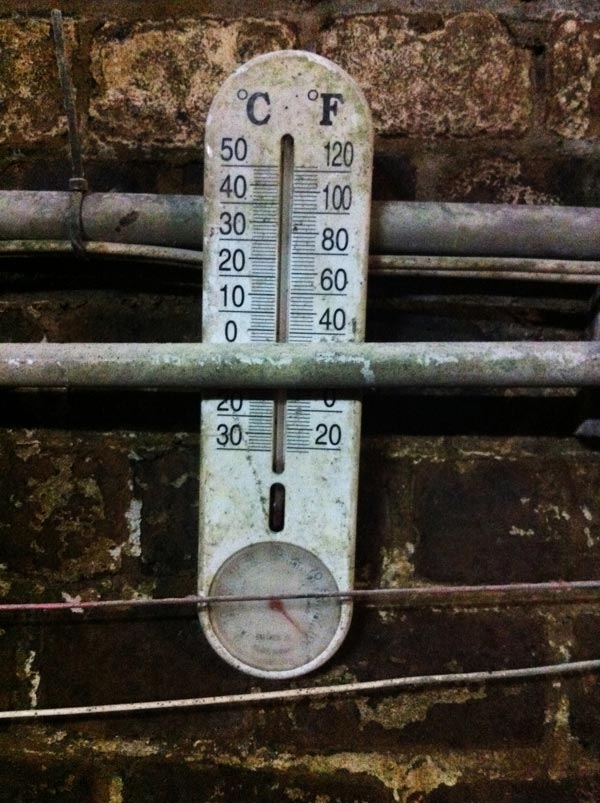
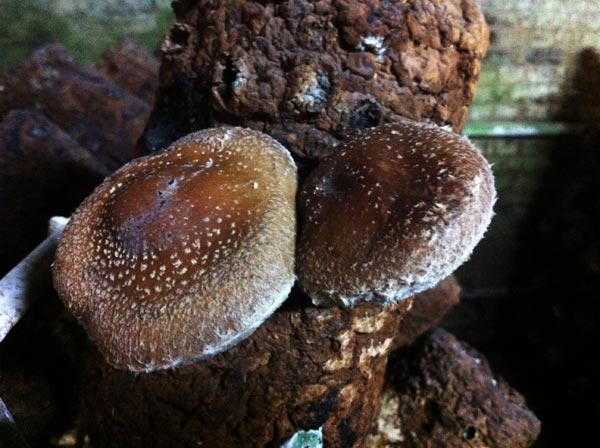
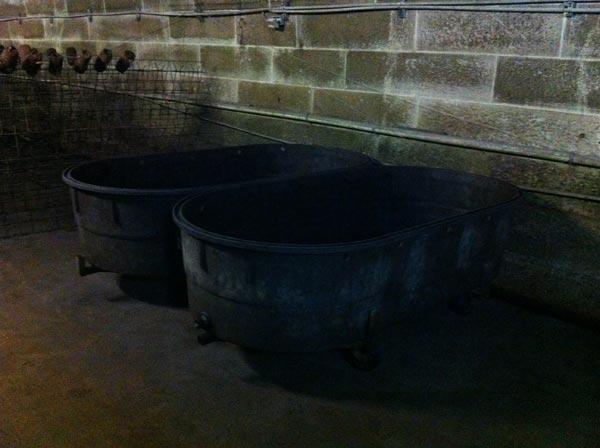
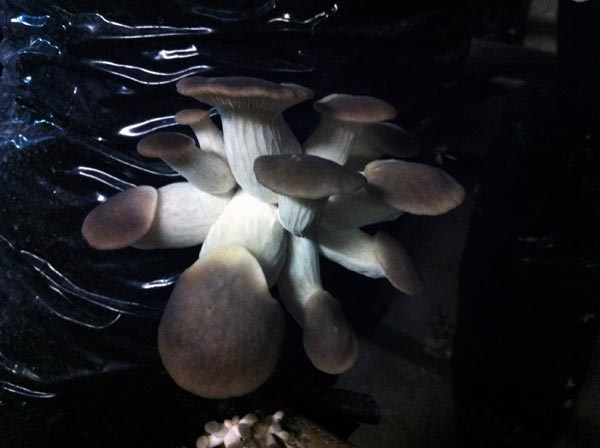
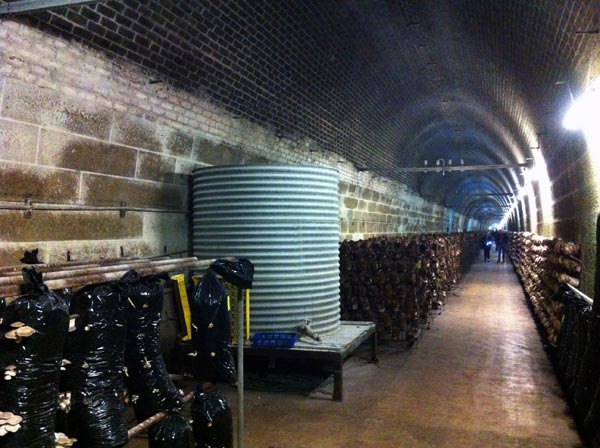
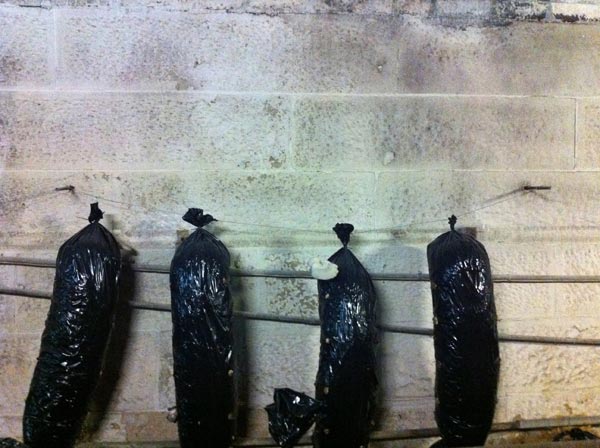
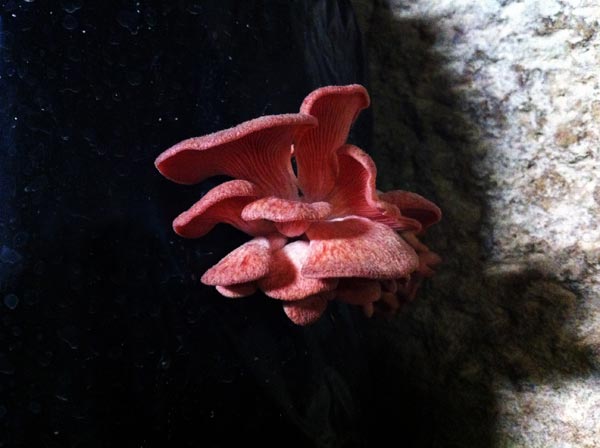
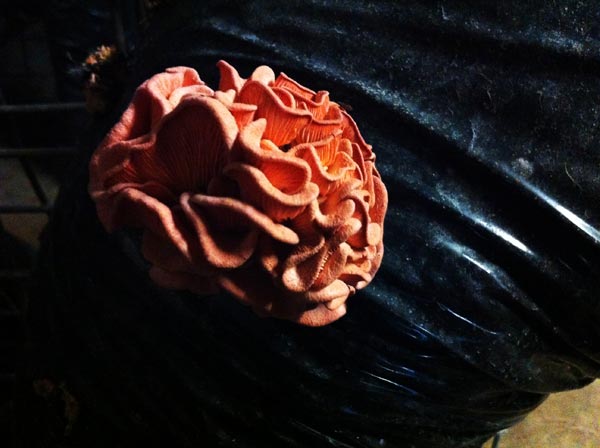

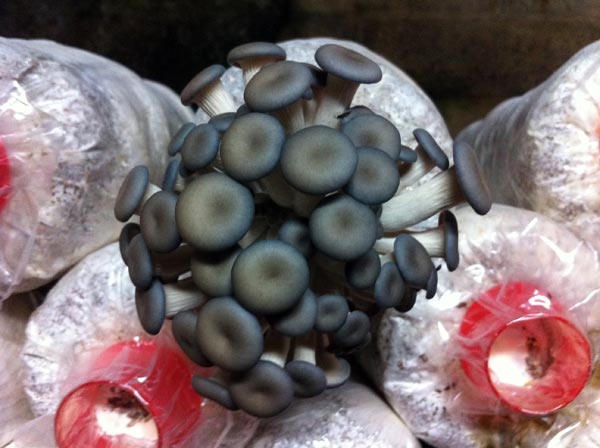
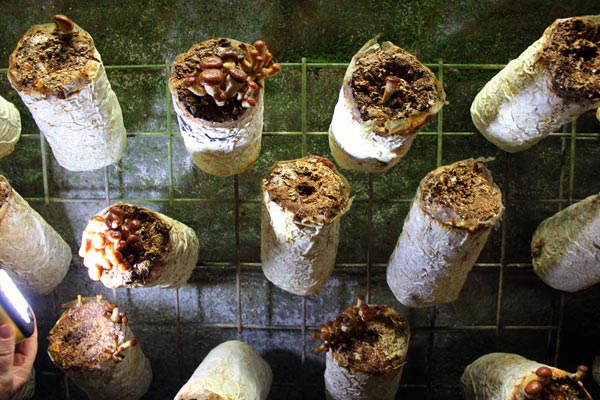
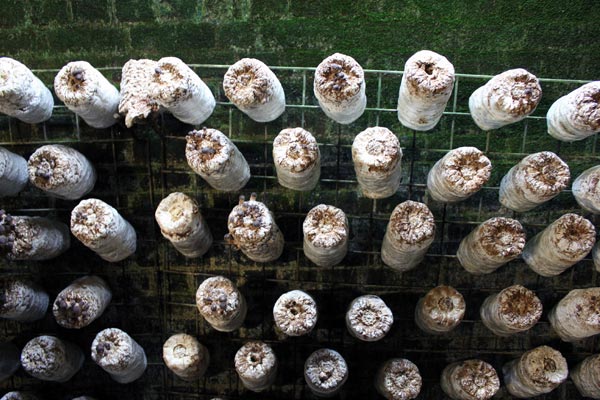
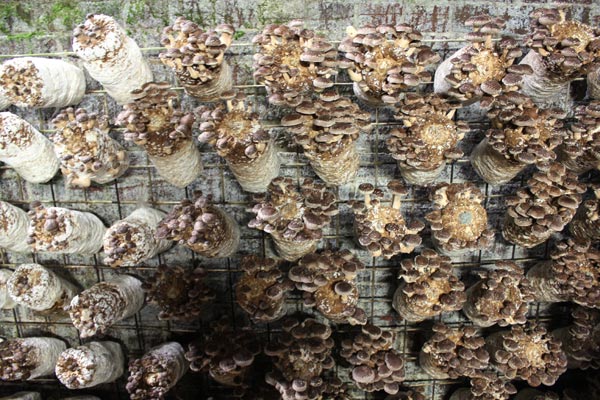
Li Sun Exotic Mushrooms, Mittagong, New South Wales, Australia.
Susan Sontag, A Place for Fantasy; Where the Stress Falls, 2001.

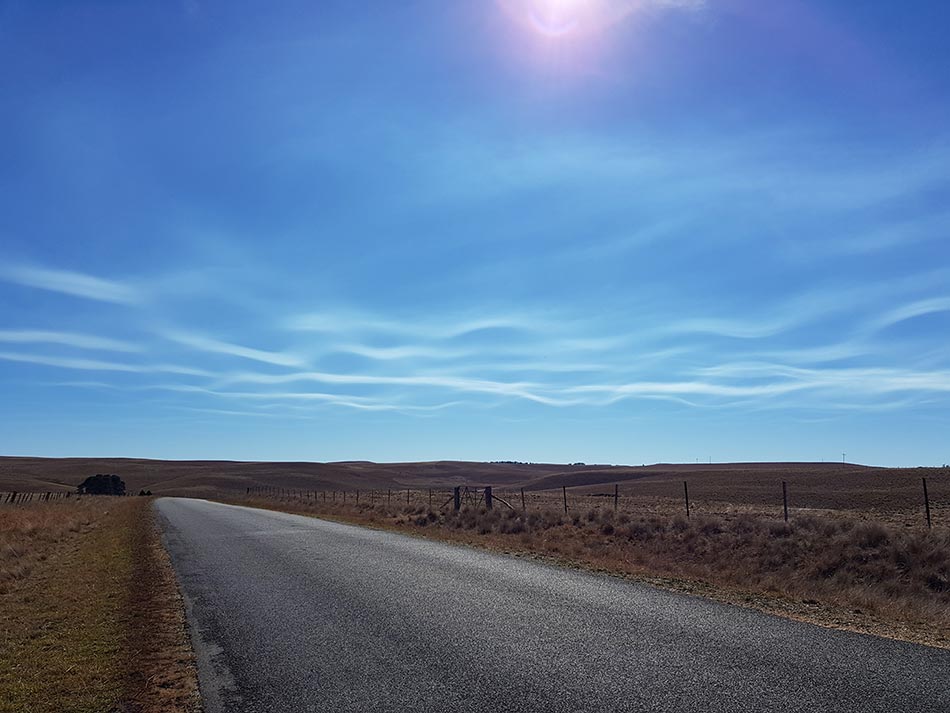 x
x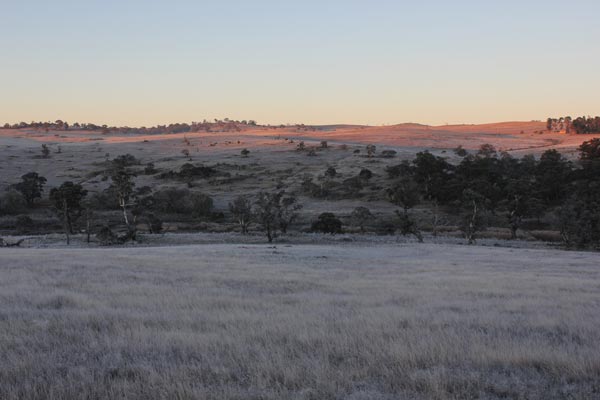 Maffra, New South Wales, 6:30am
Maffra, New South Wales, 6:30am